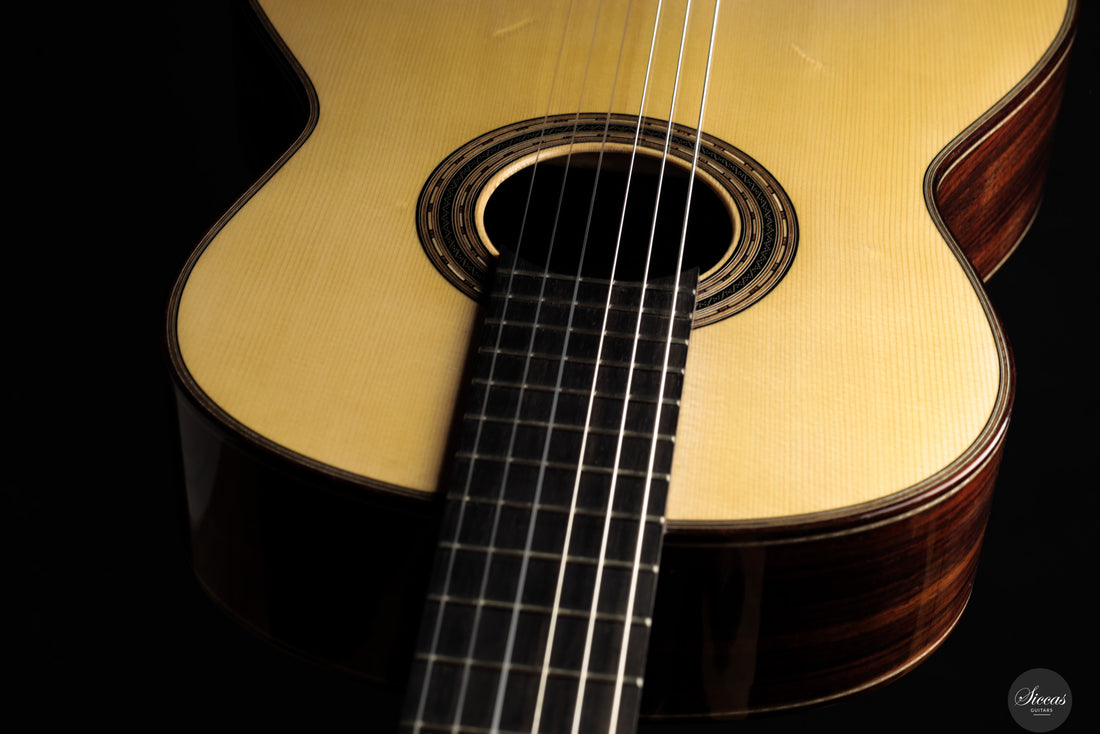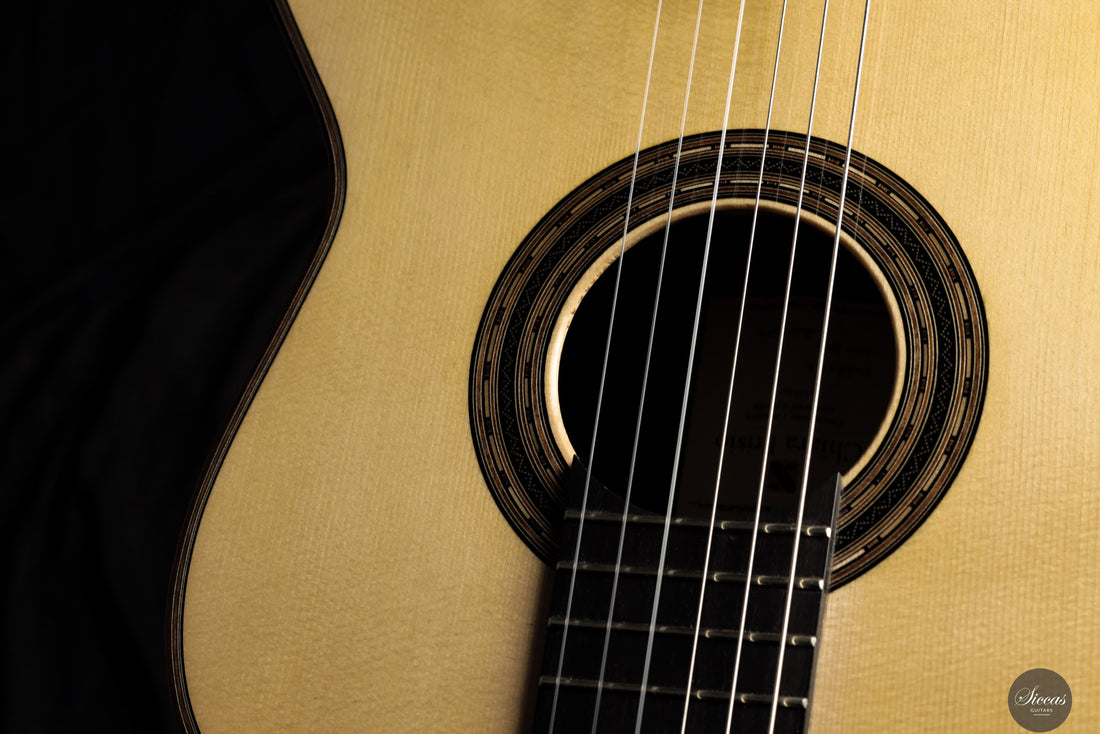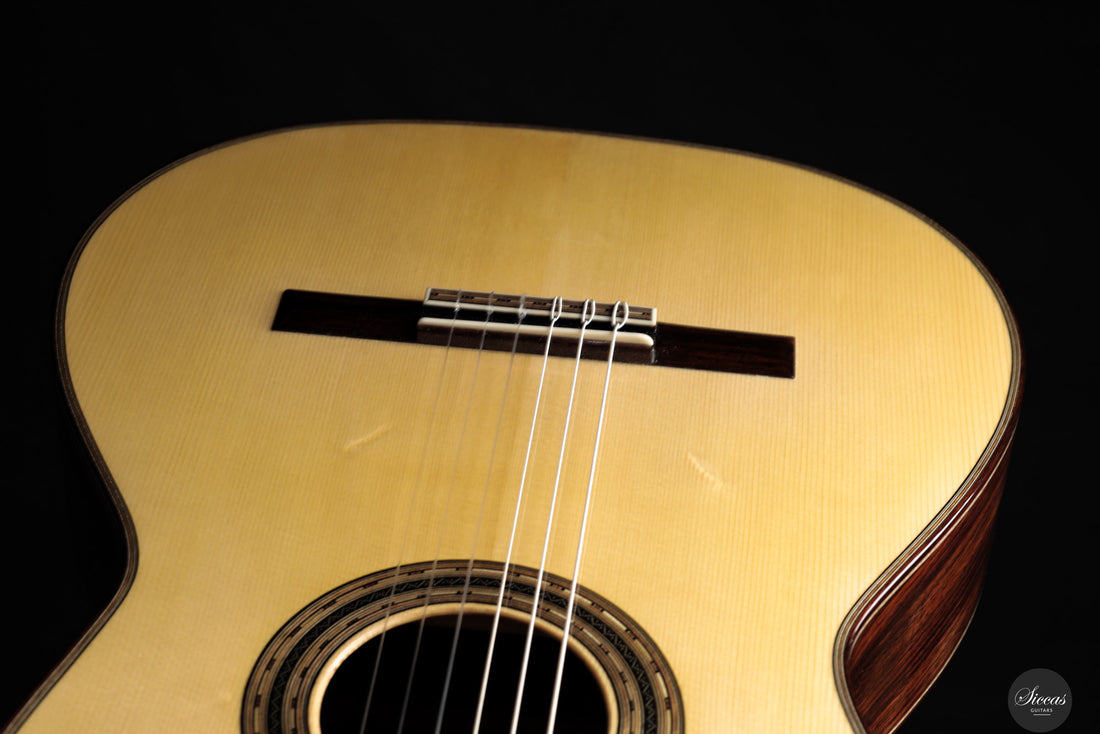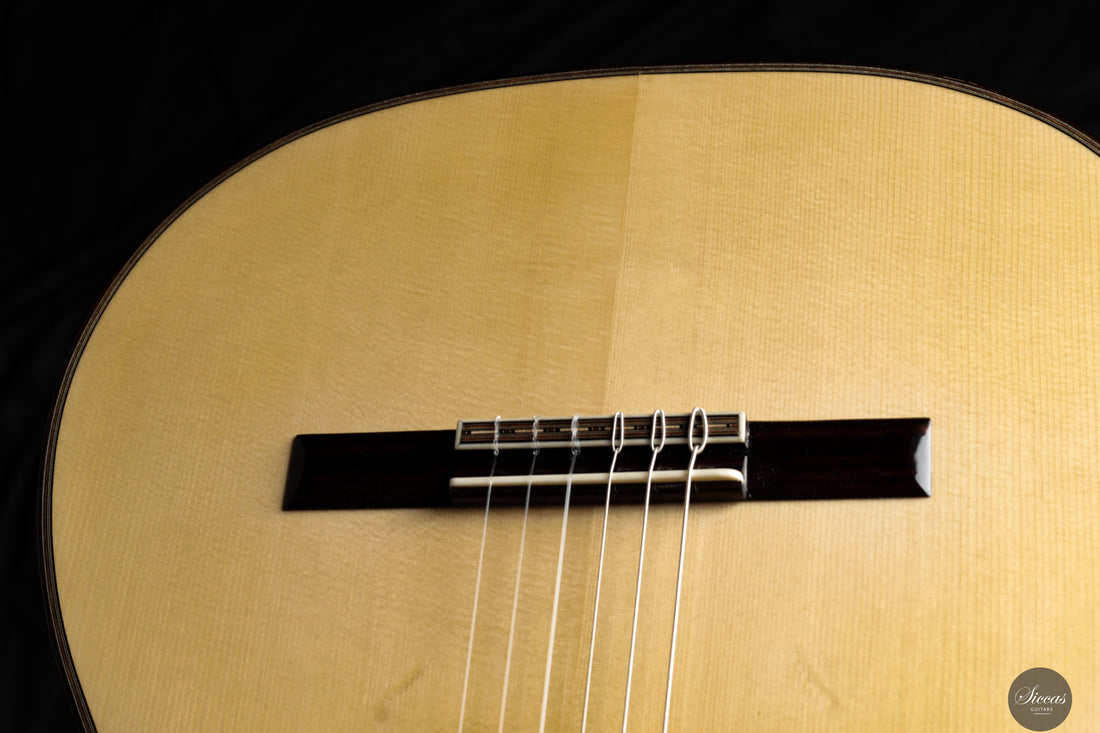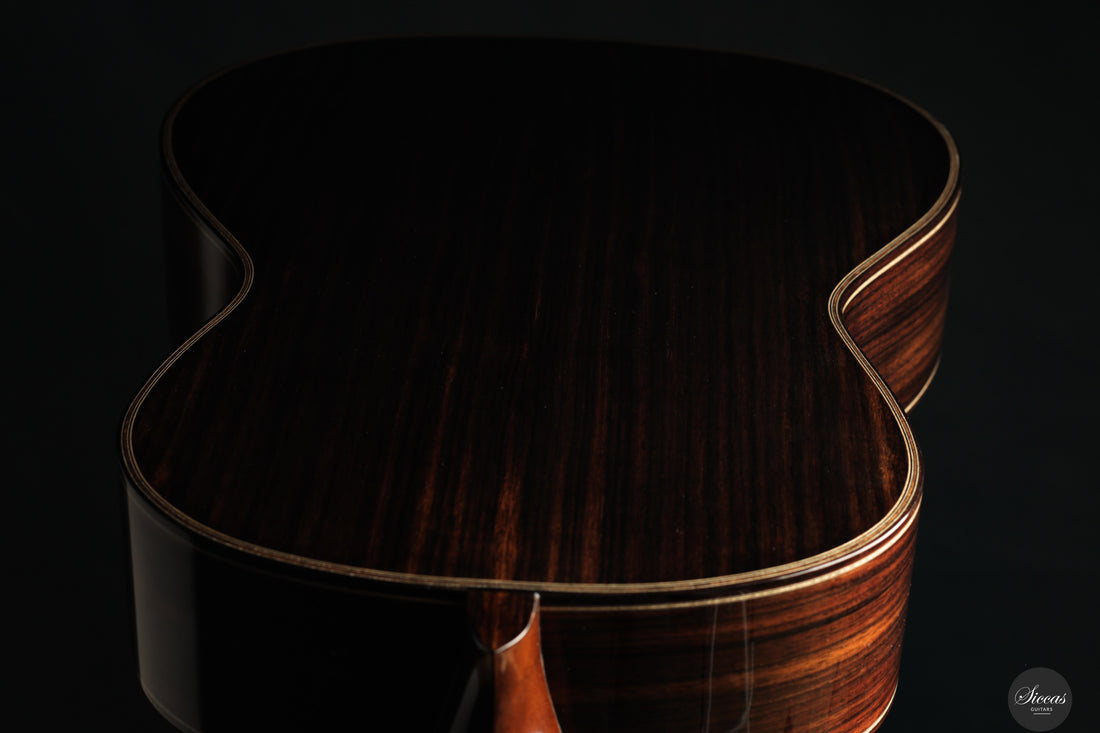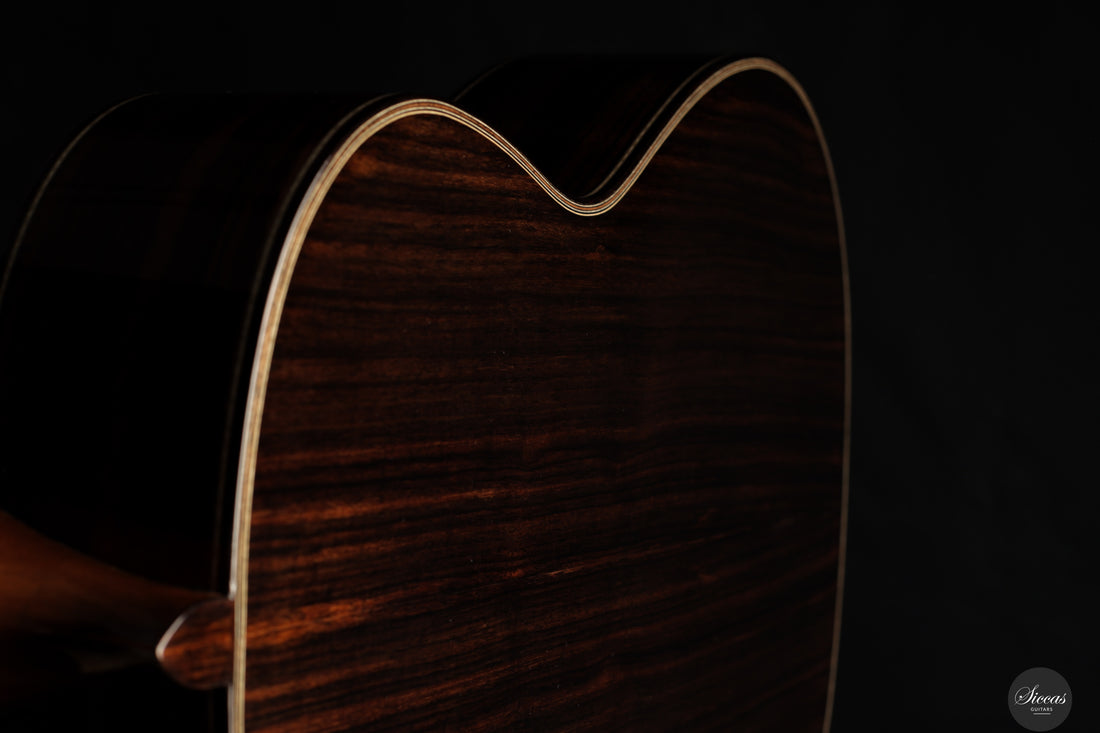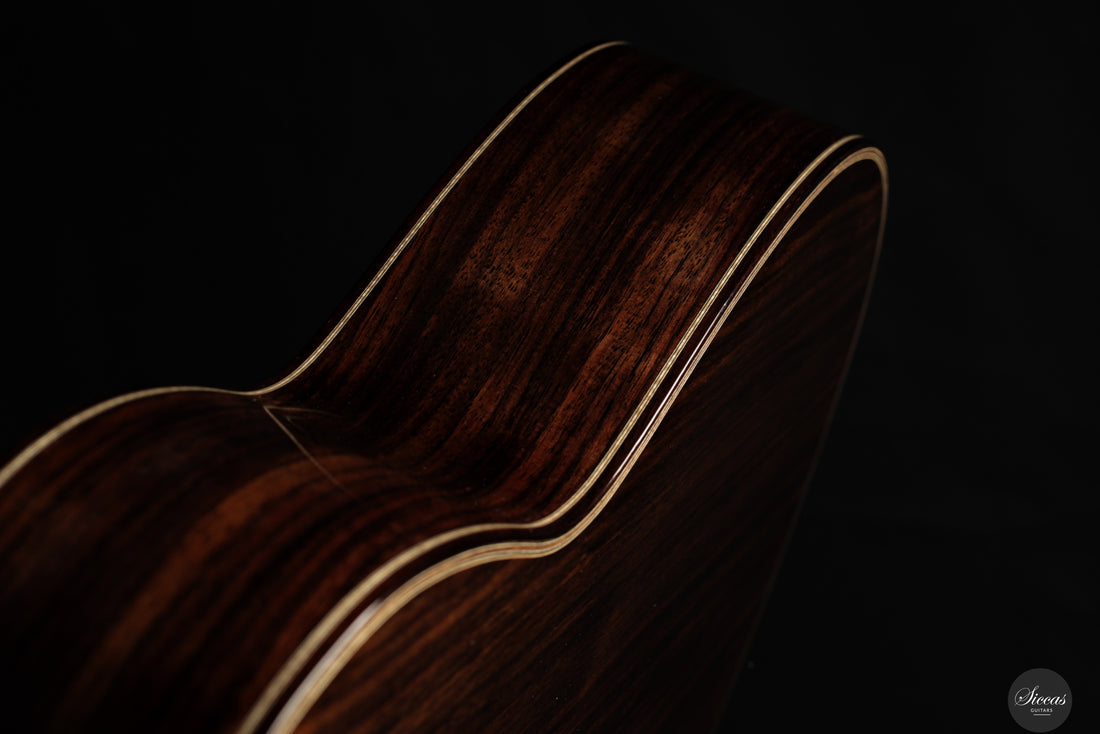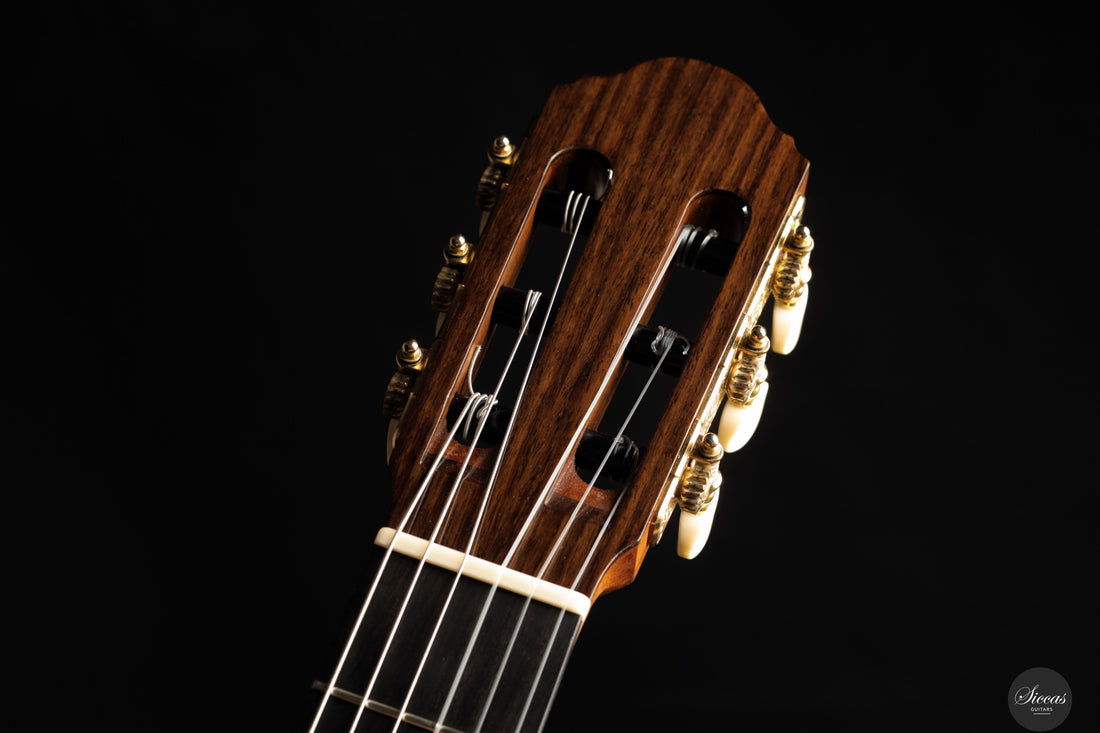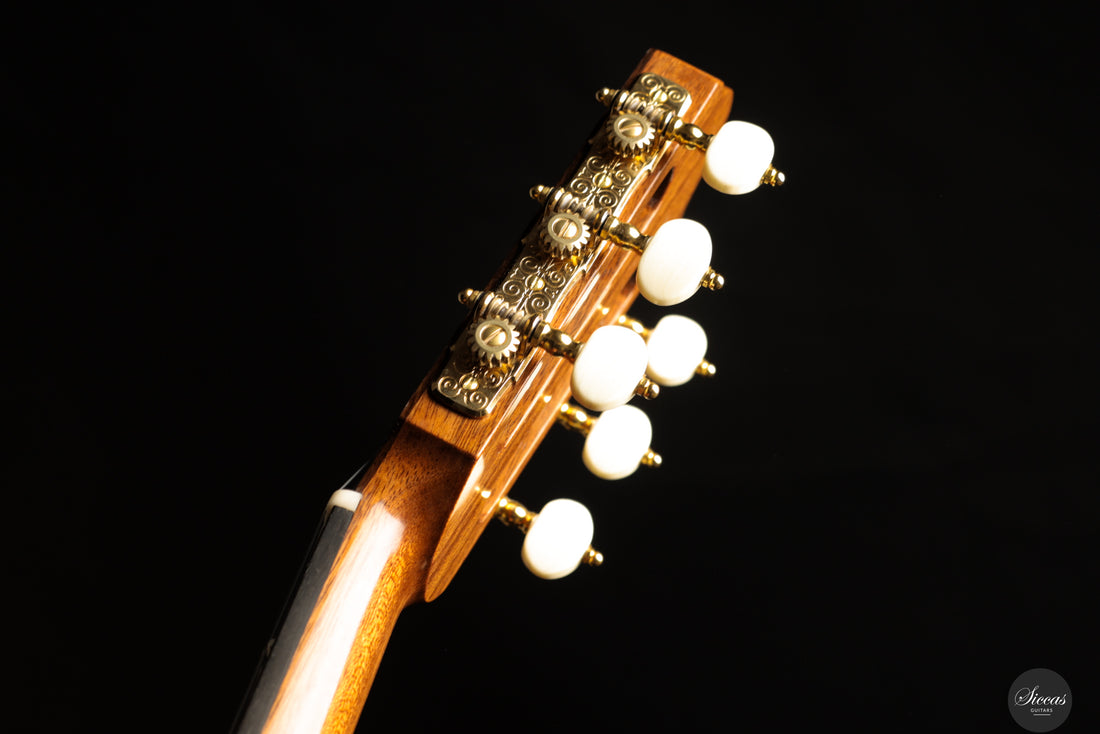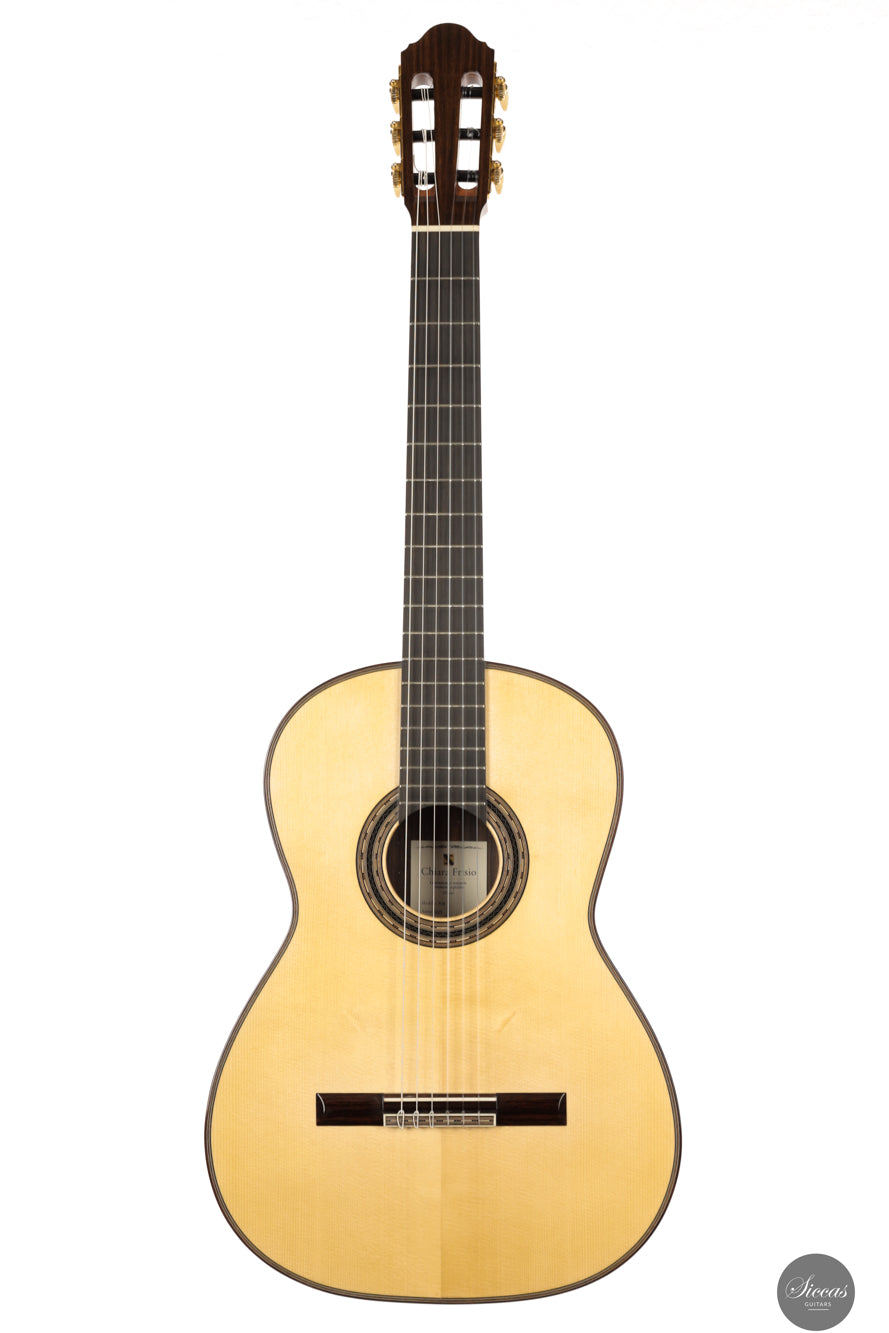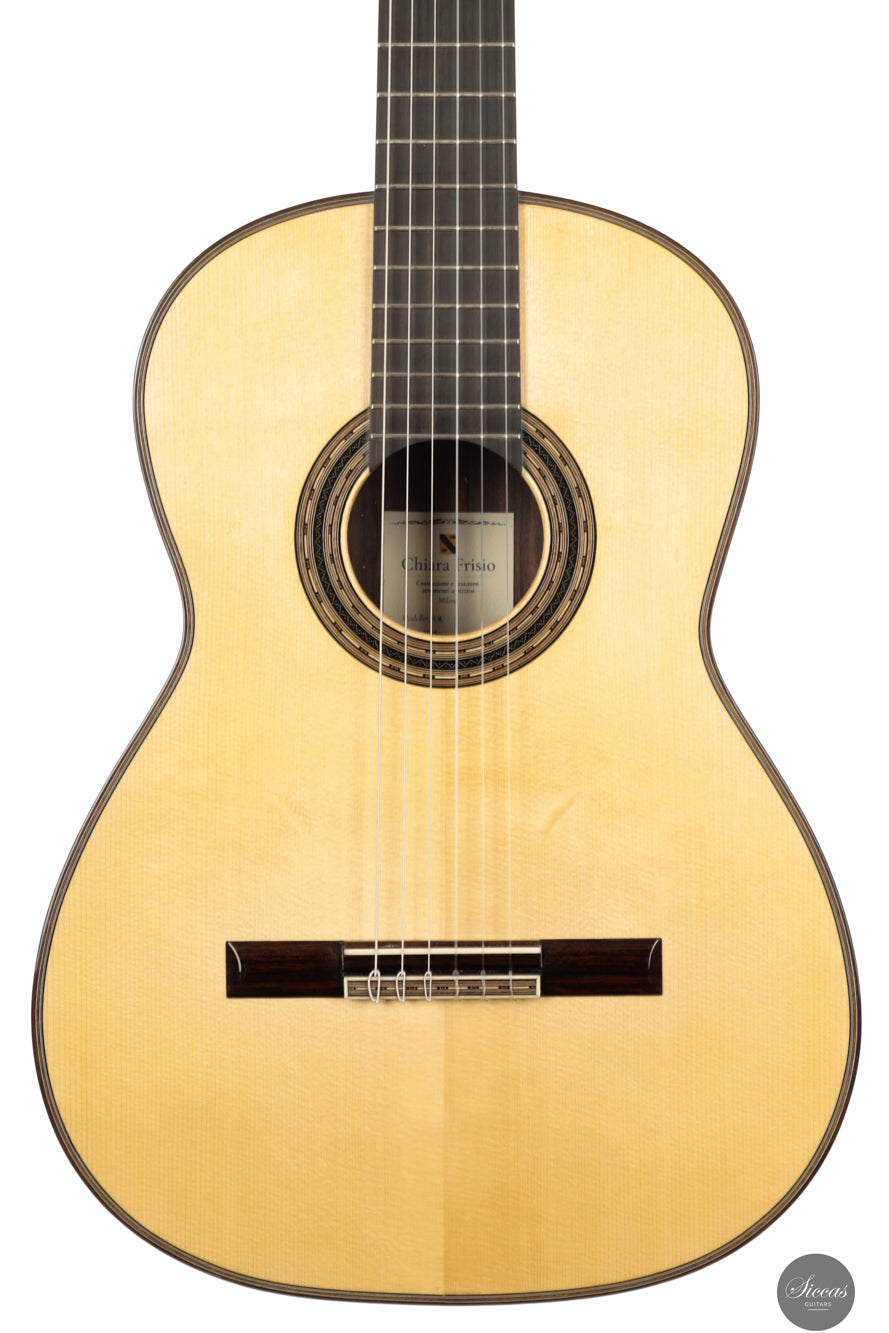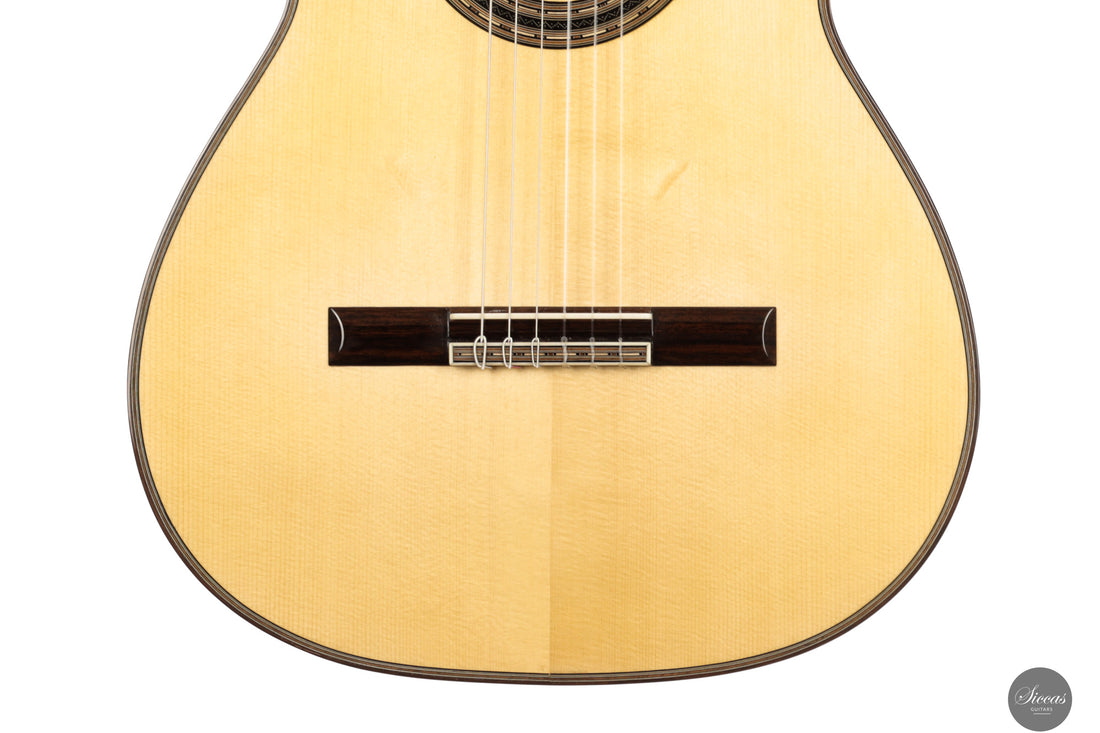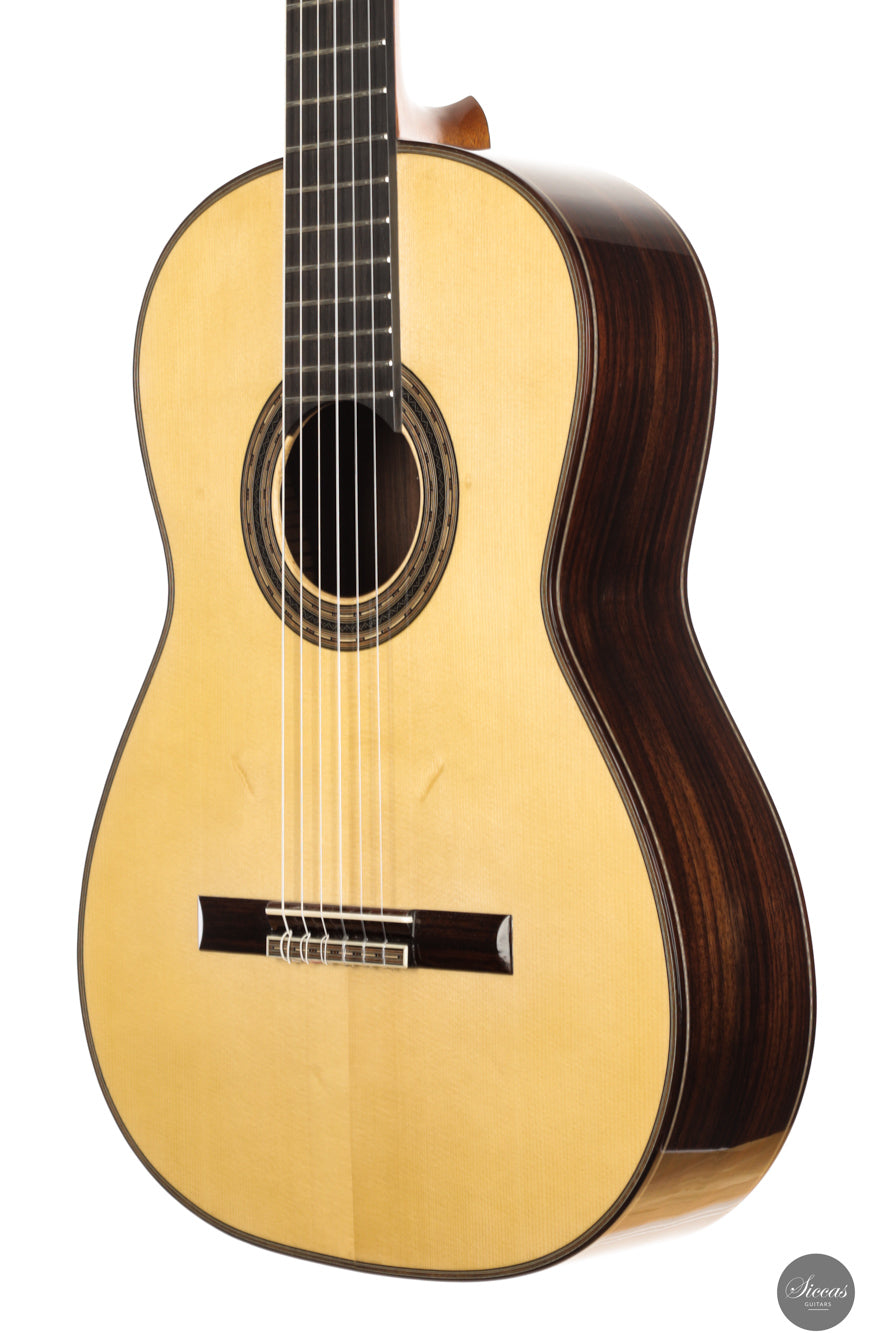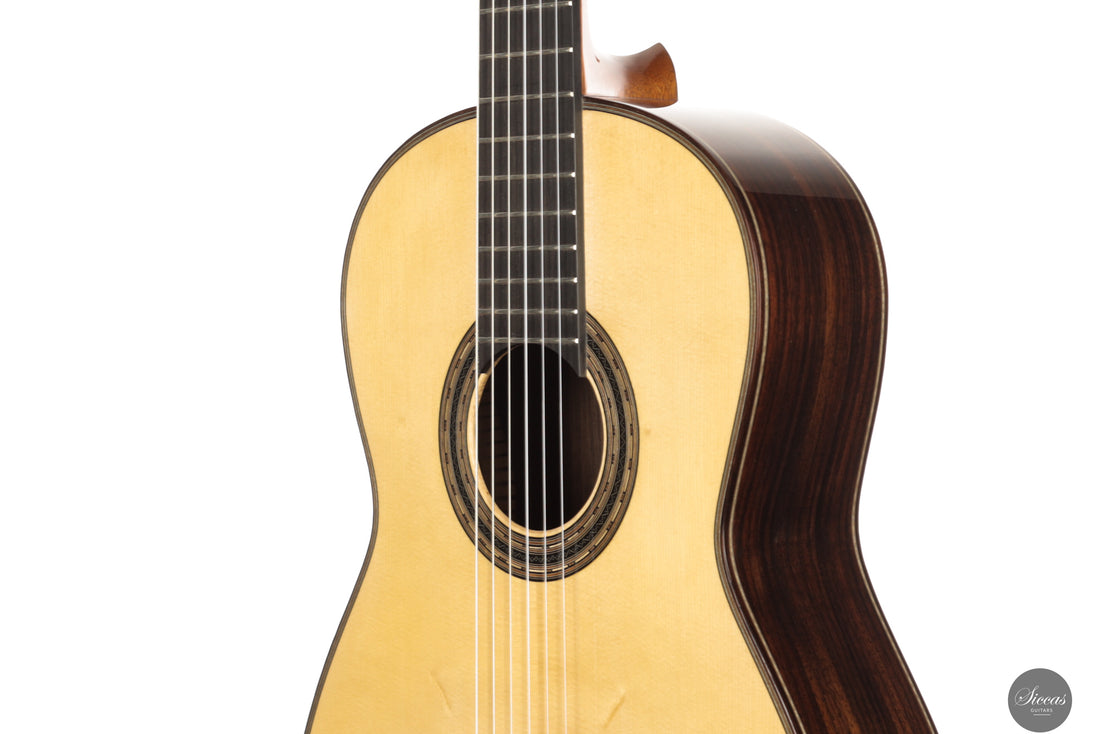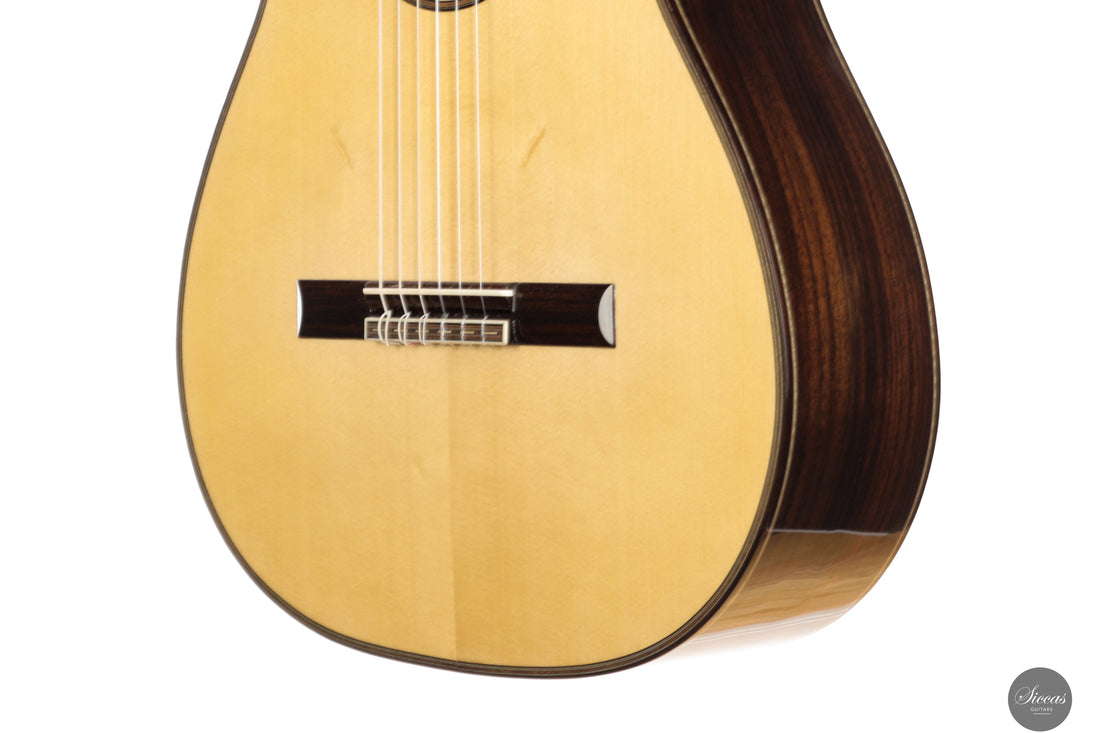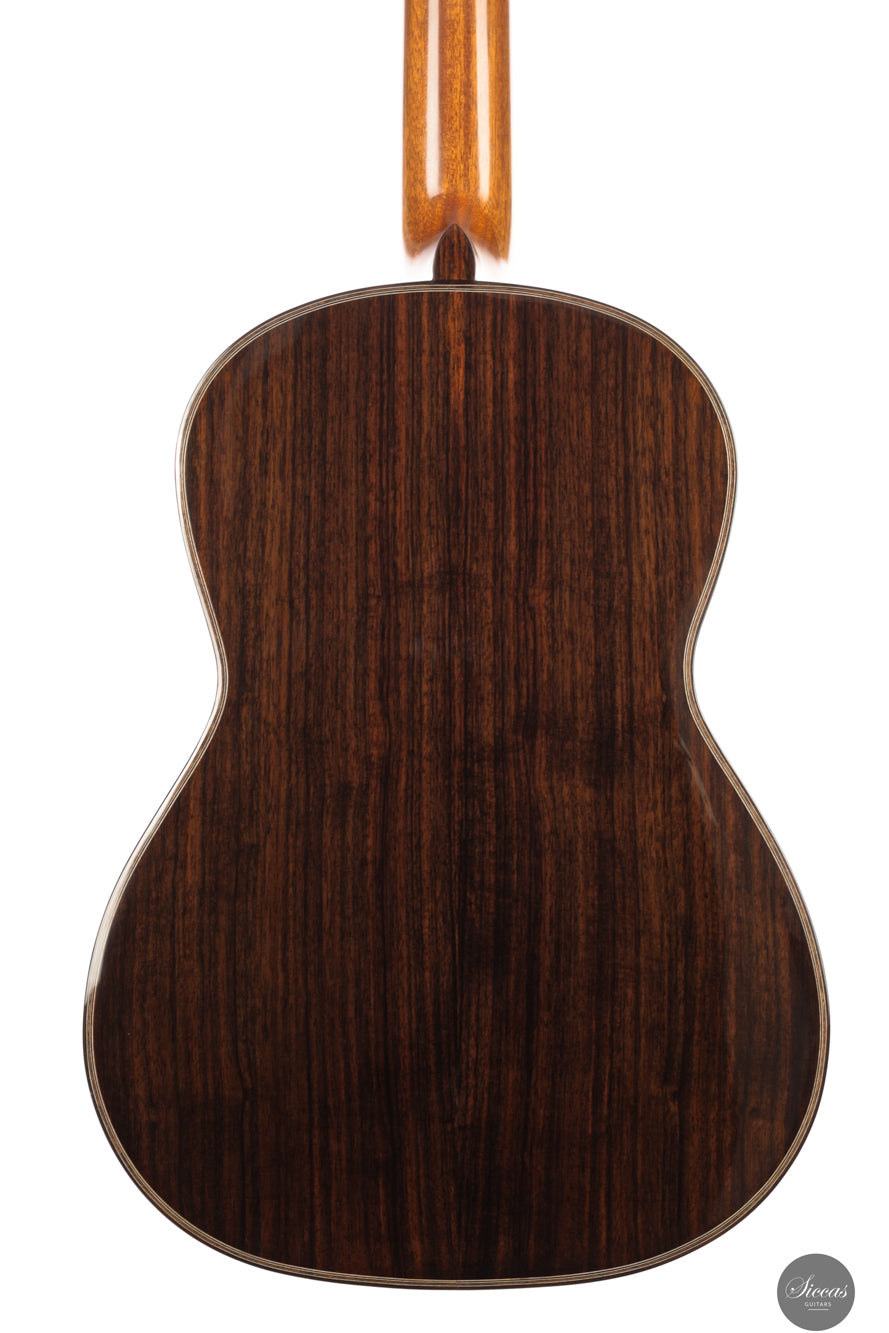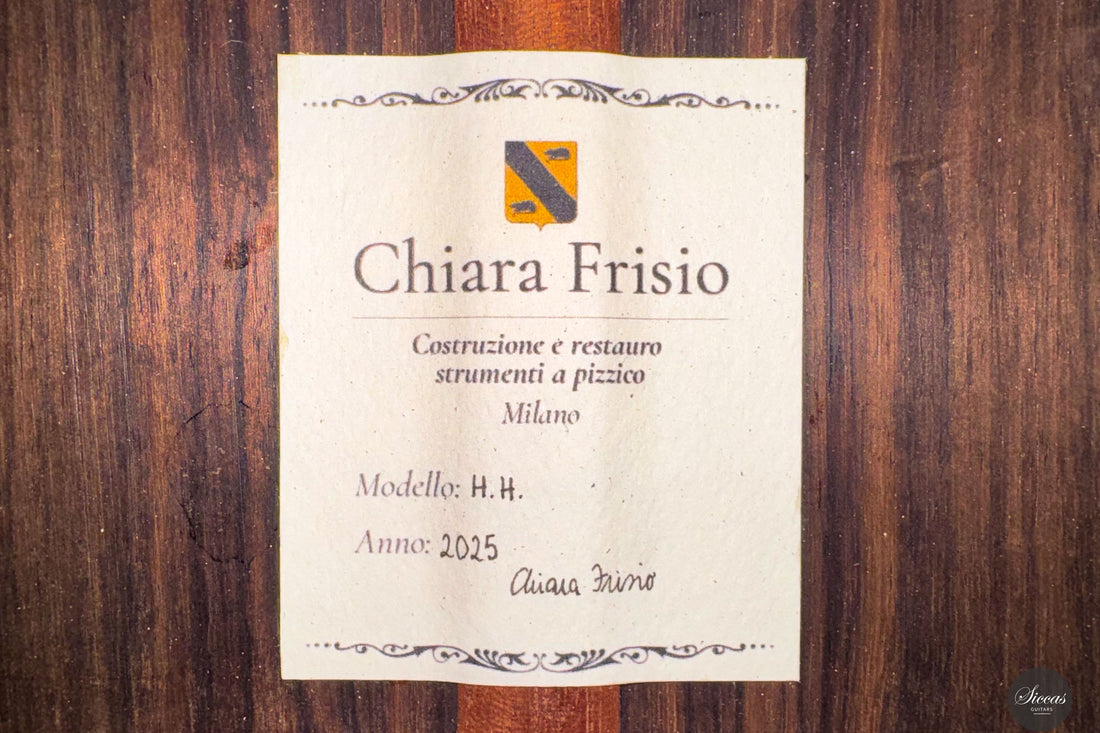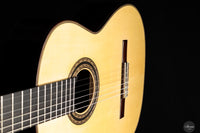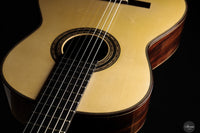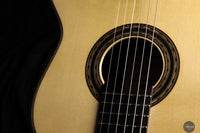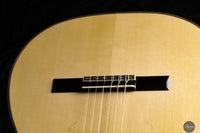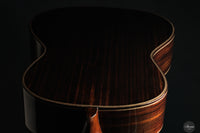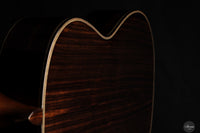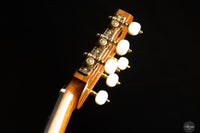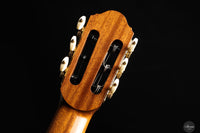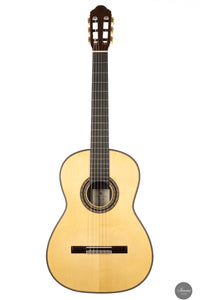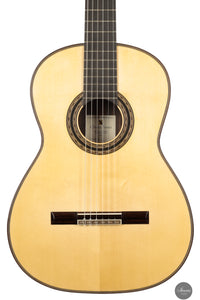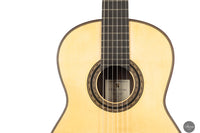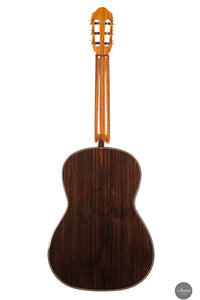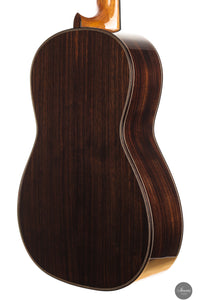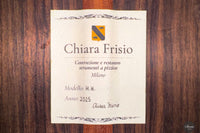Chiara Frisio - 2025 - No. 10
Chiara Frisio - 2025 - No. 10
Details
Details
Overview
Overview
Shipping important note
Shipping important note
Delivery times are typically reliable and most instruments arrive within the estimated timeframe.
Should any unexpected delay occur, our team will keep you informed and provide support at every step. For all shipping details and exceptions, please see our Shipping Policy.
Details about GPSR
Details about GPSR
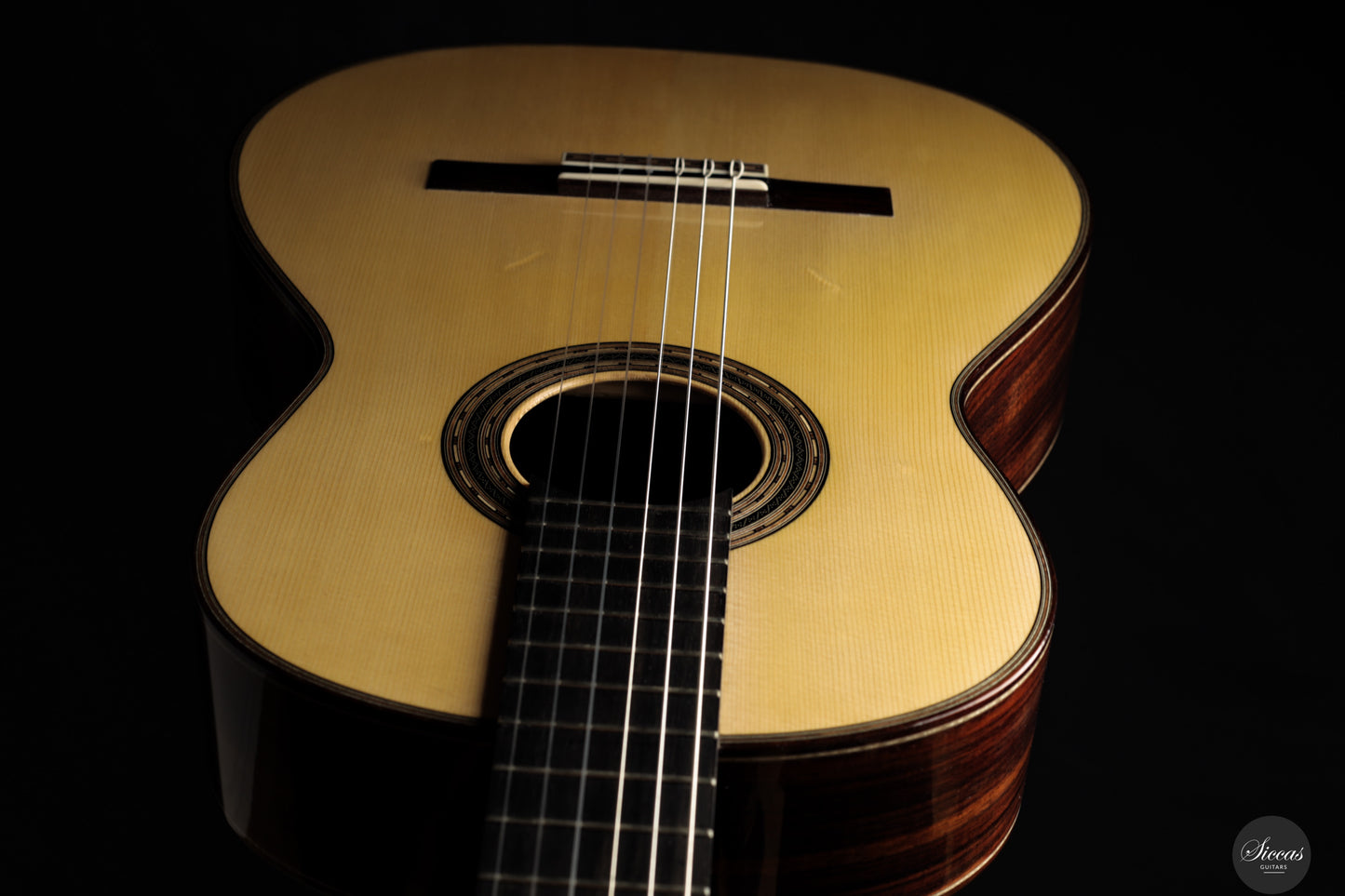
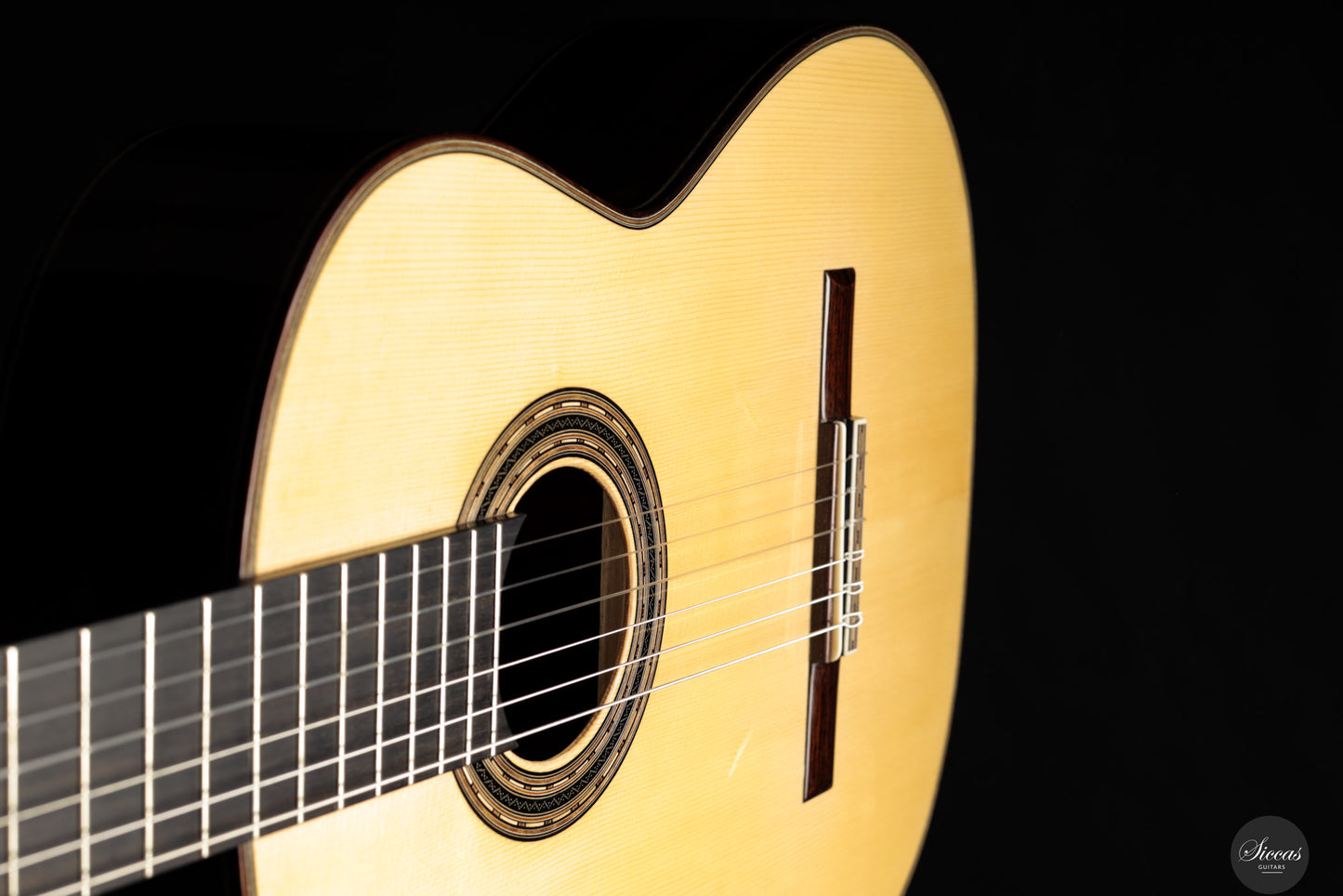
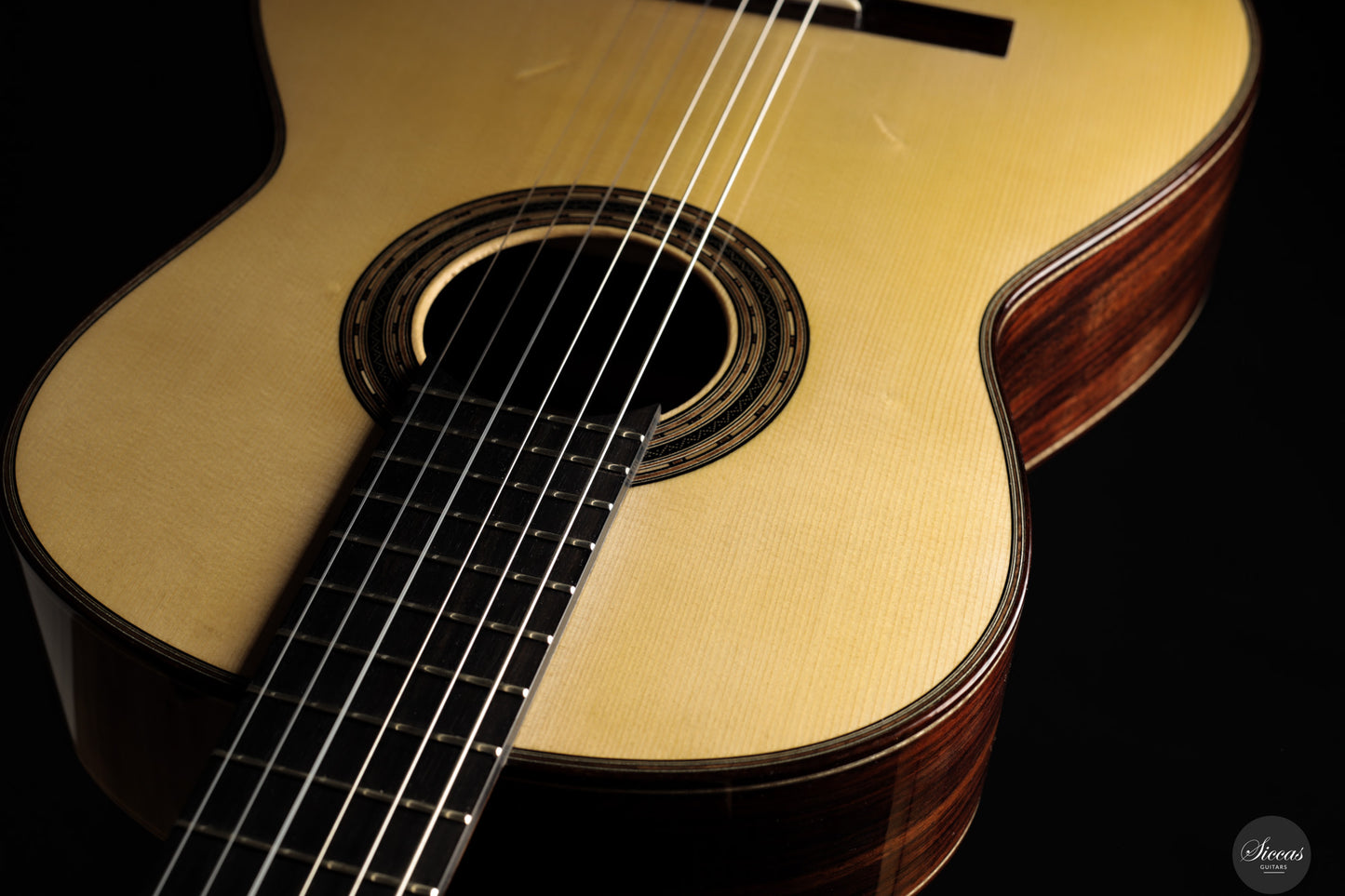
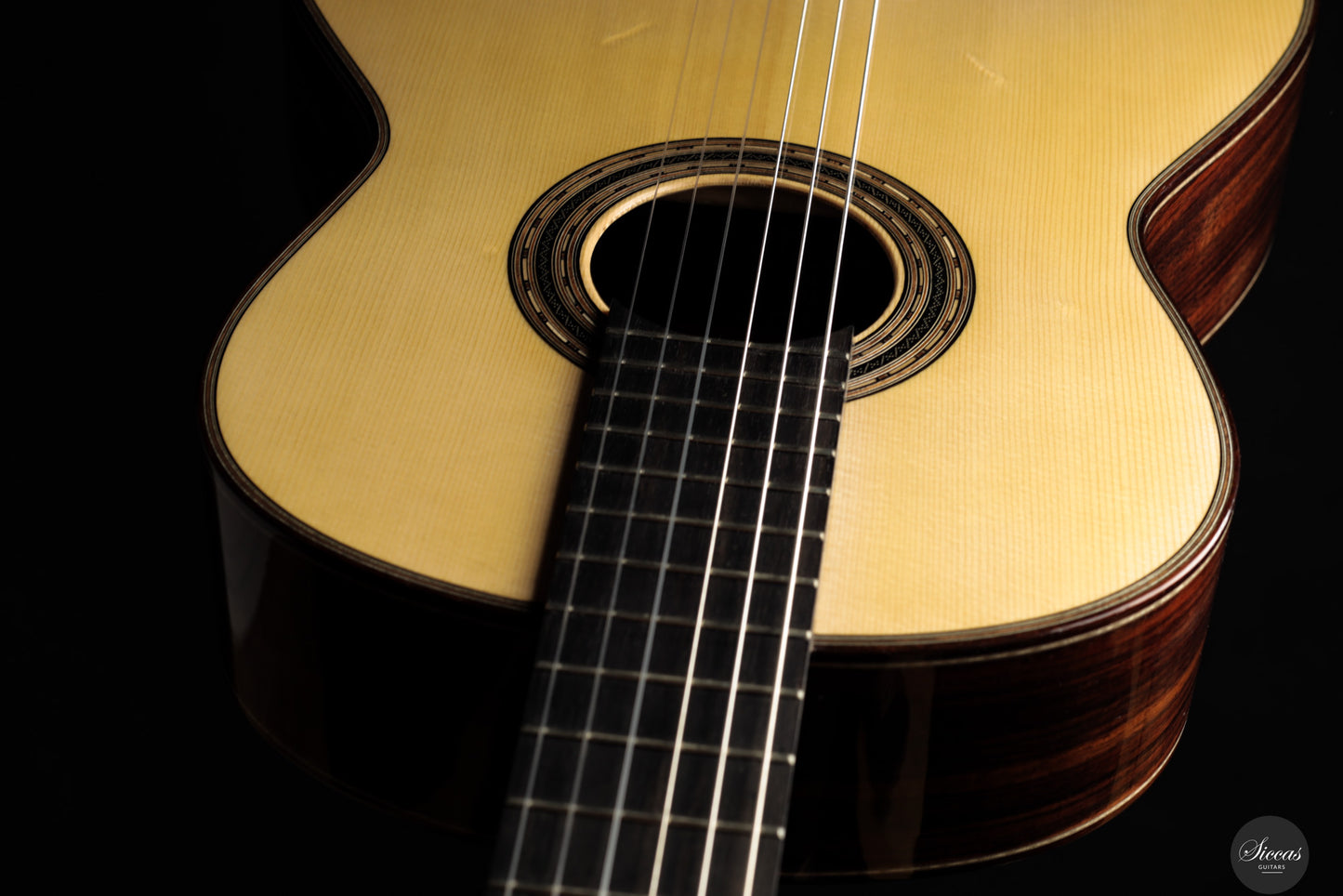
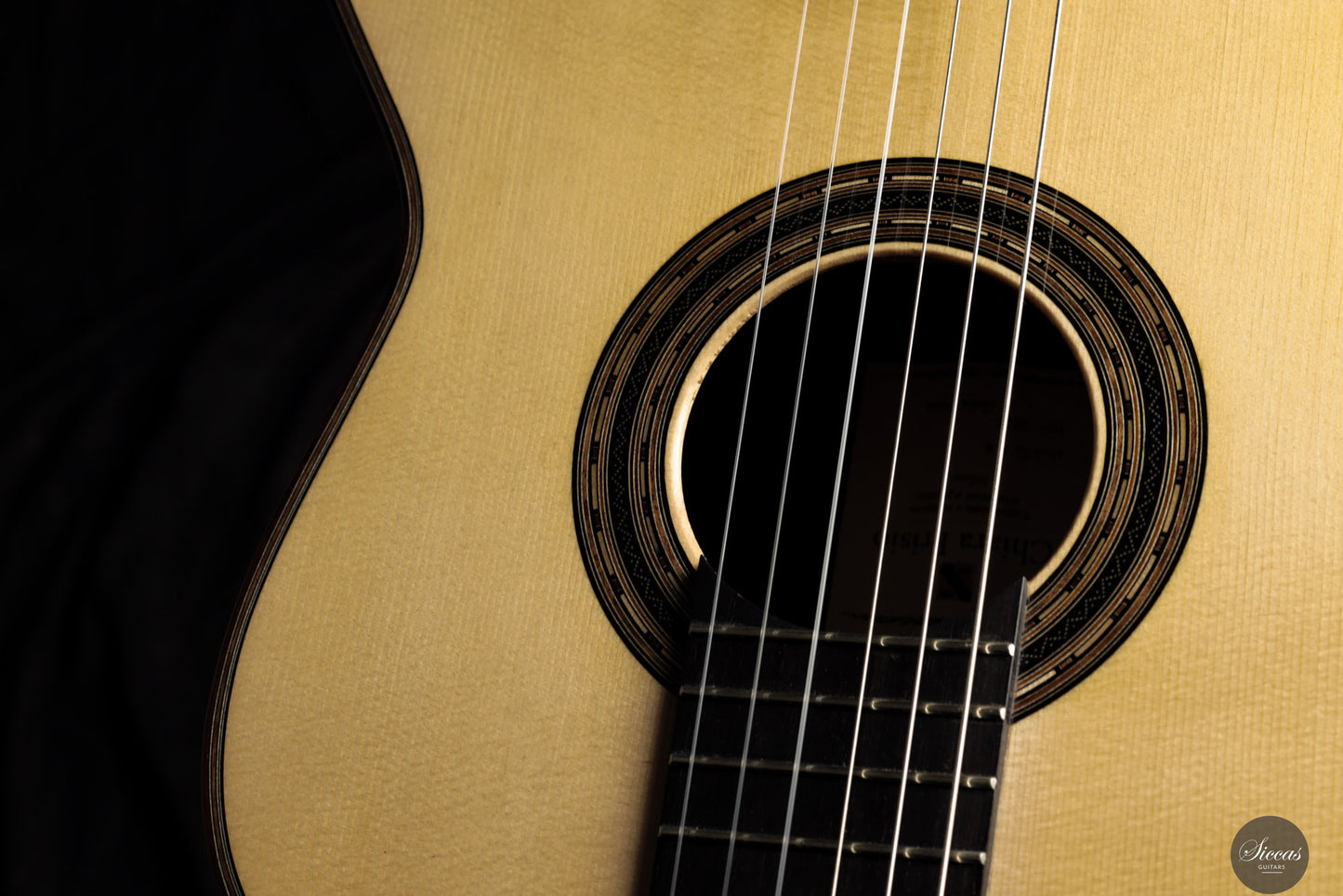

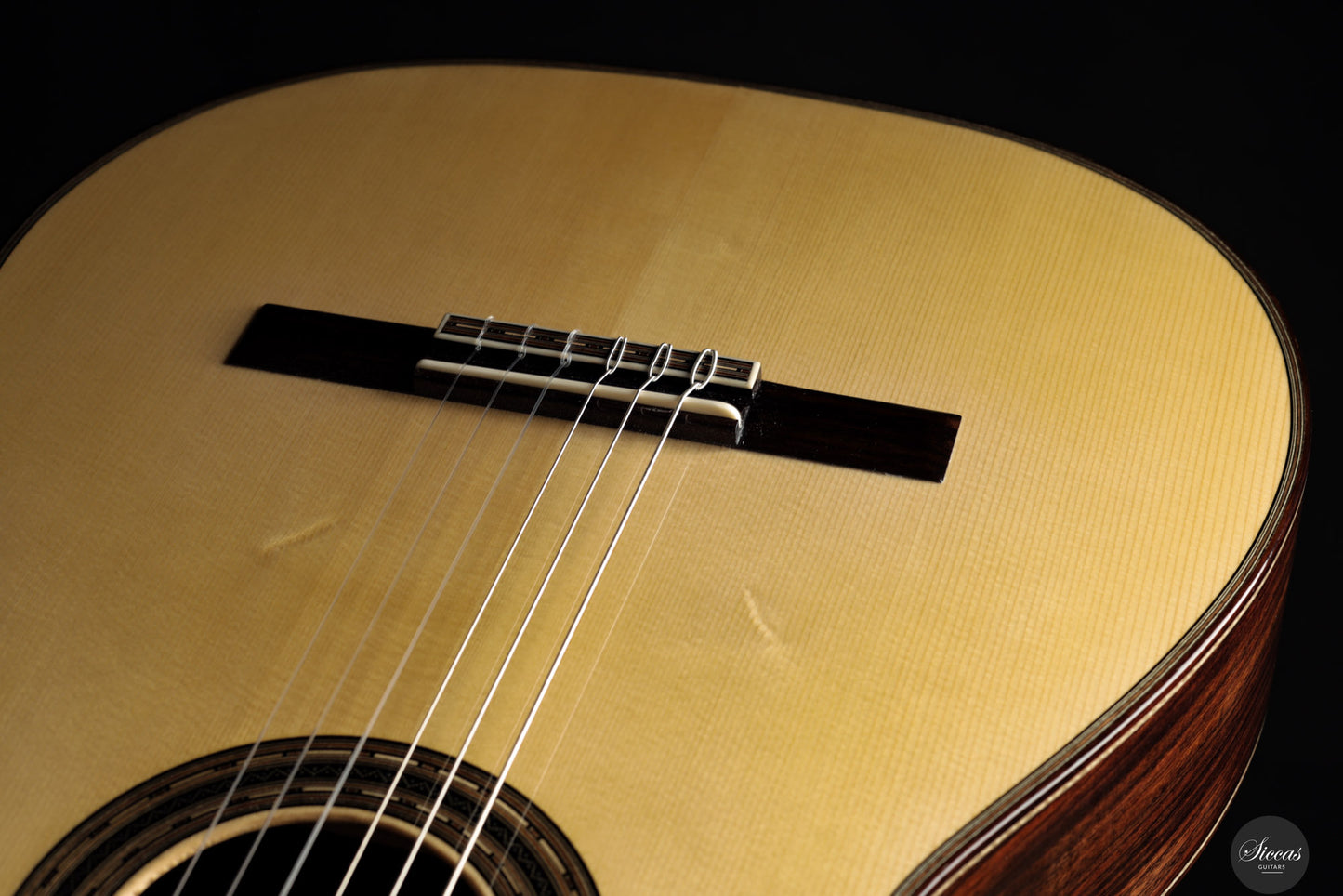

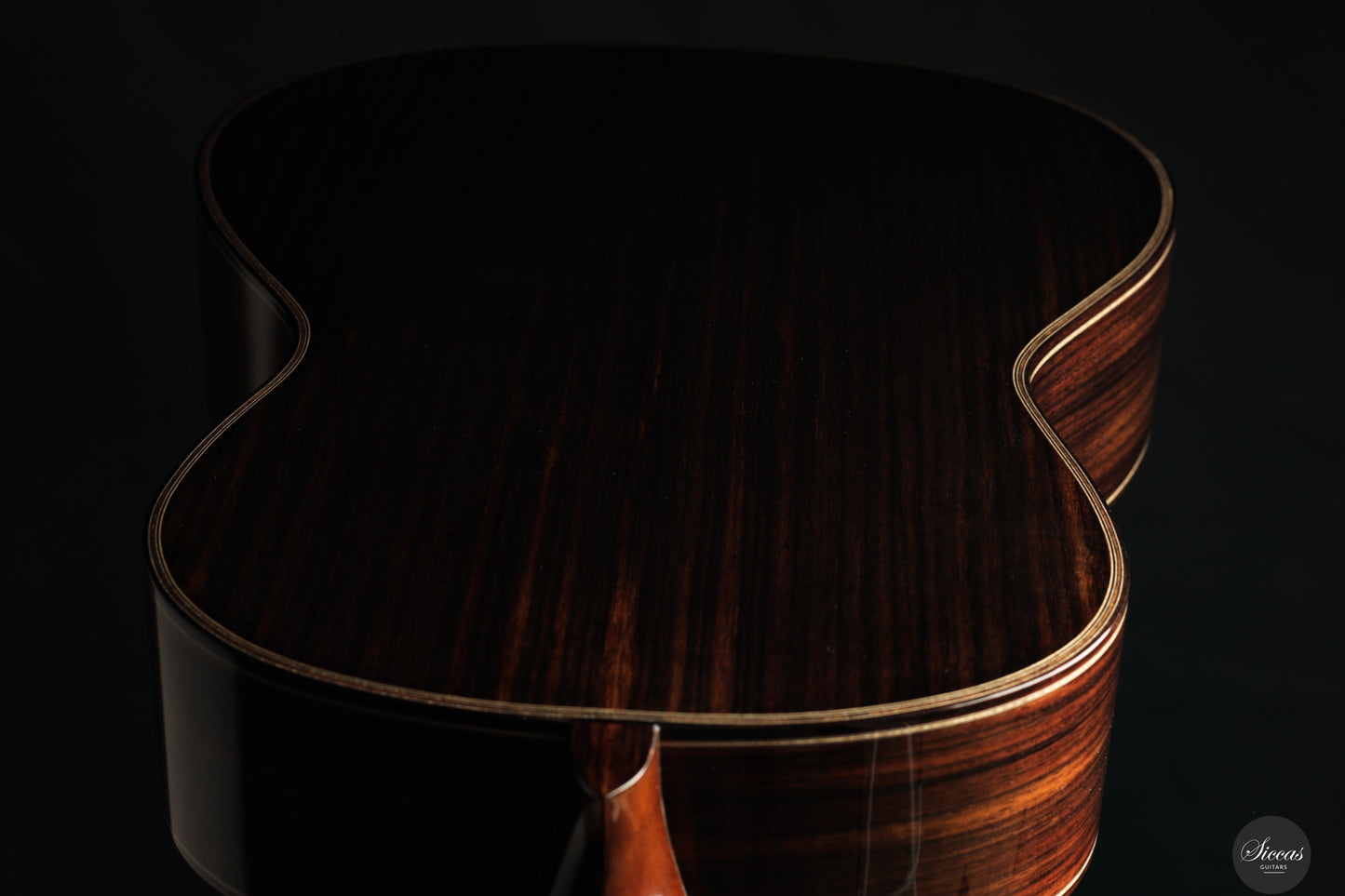

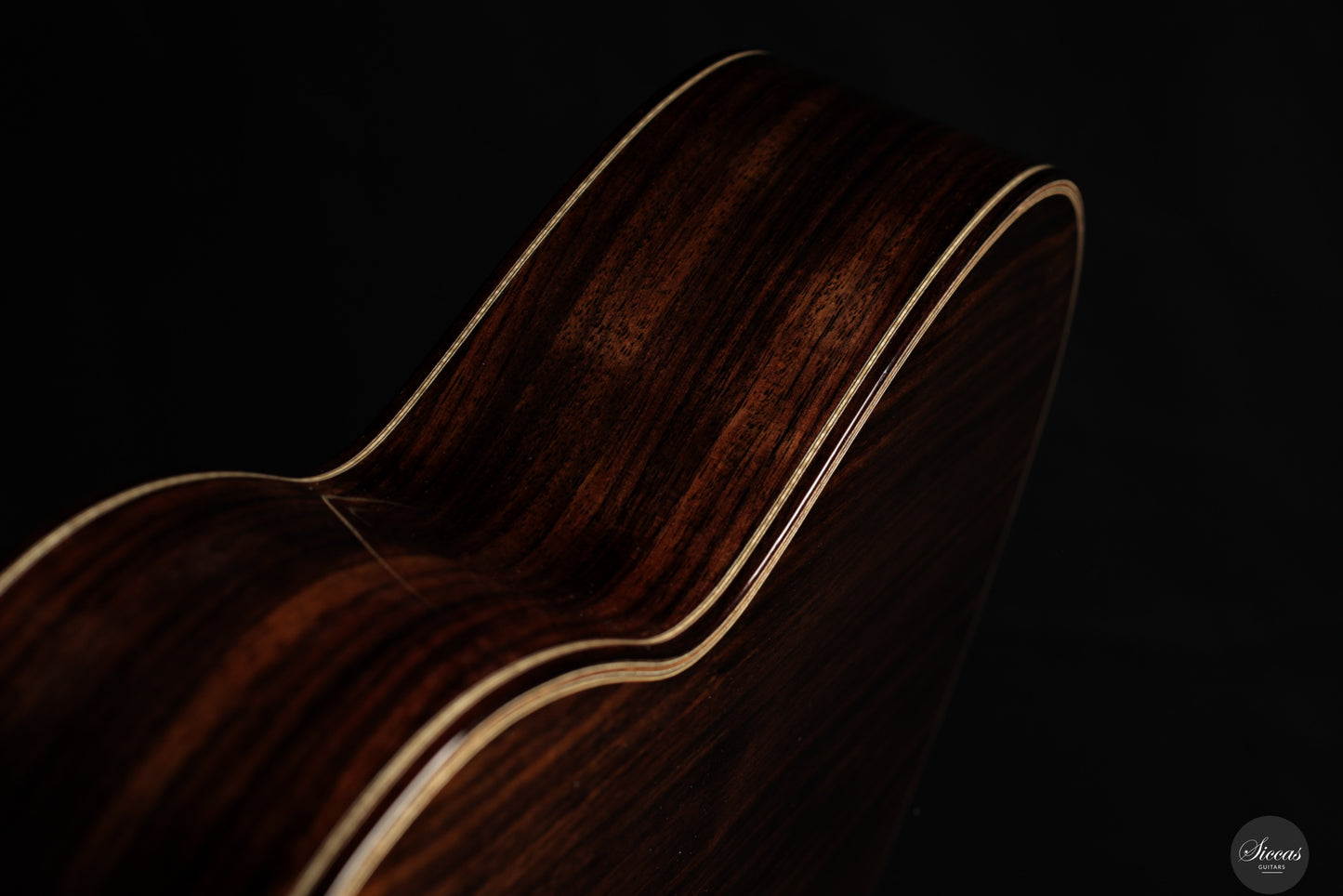
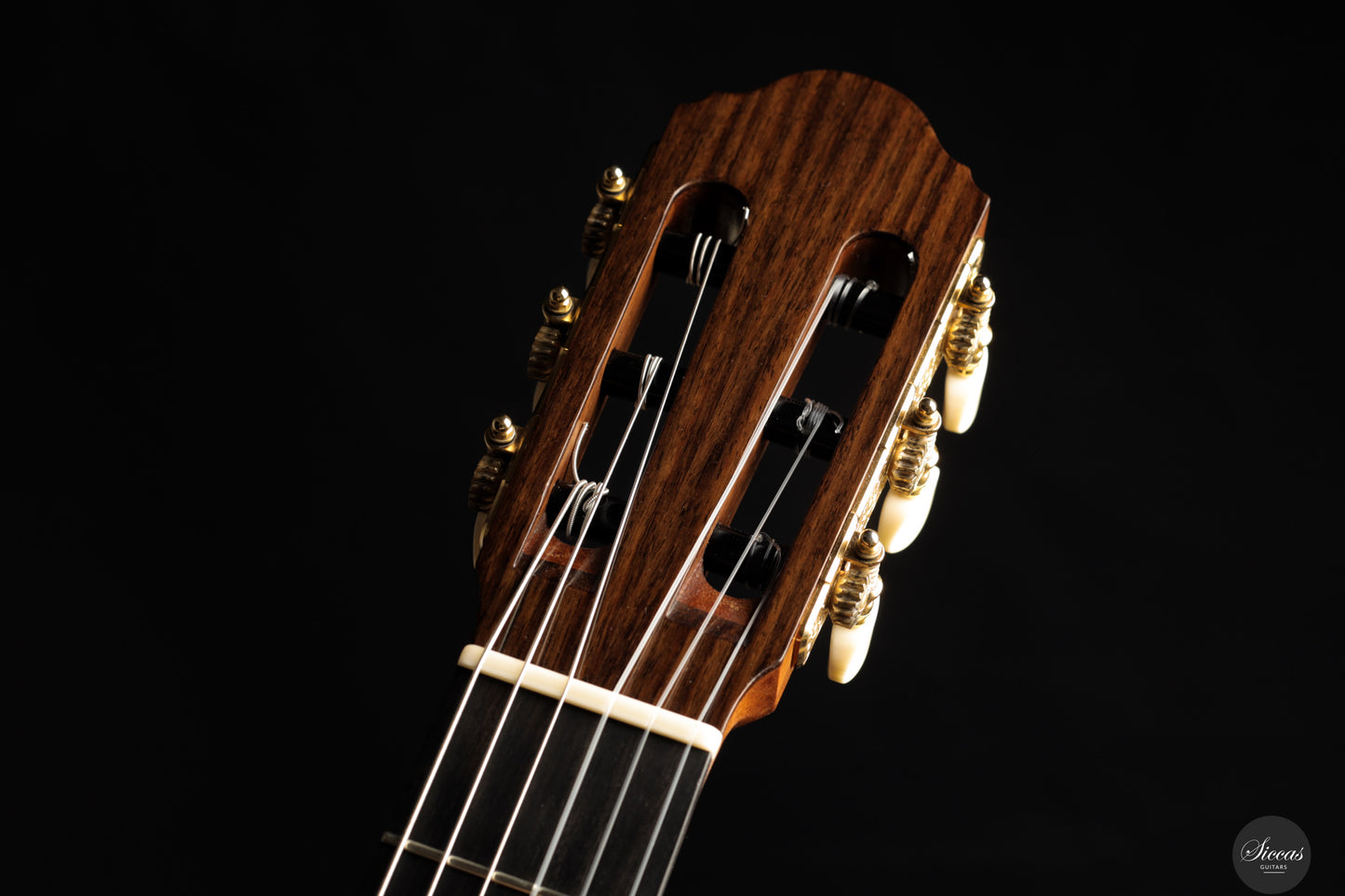
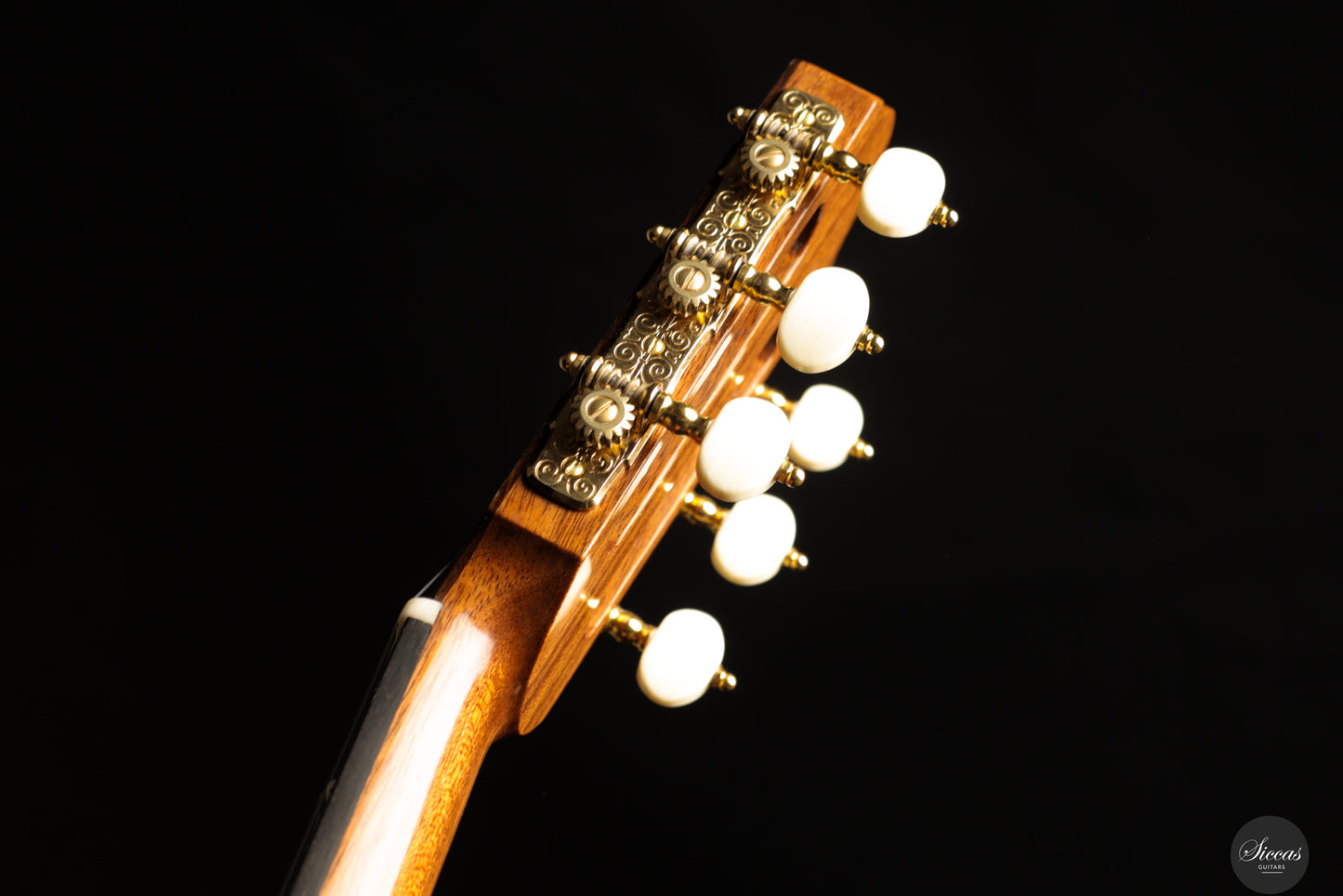

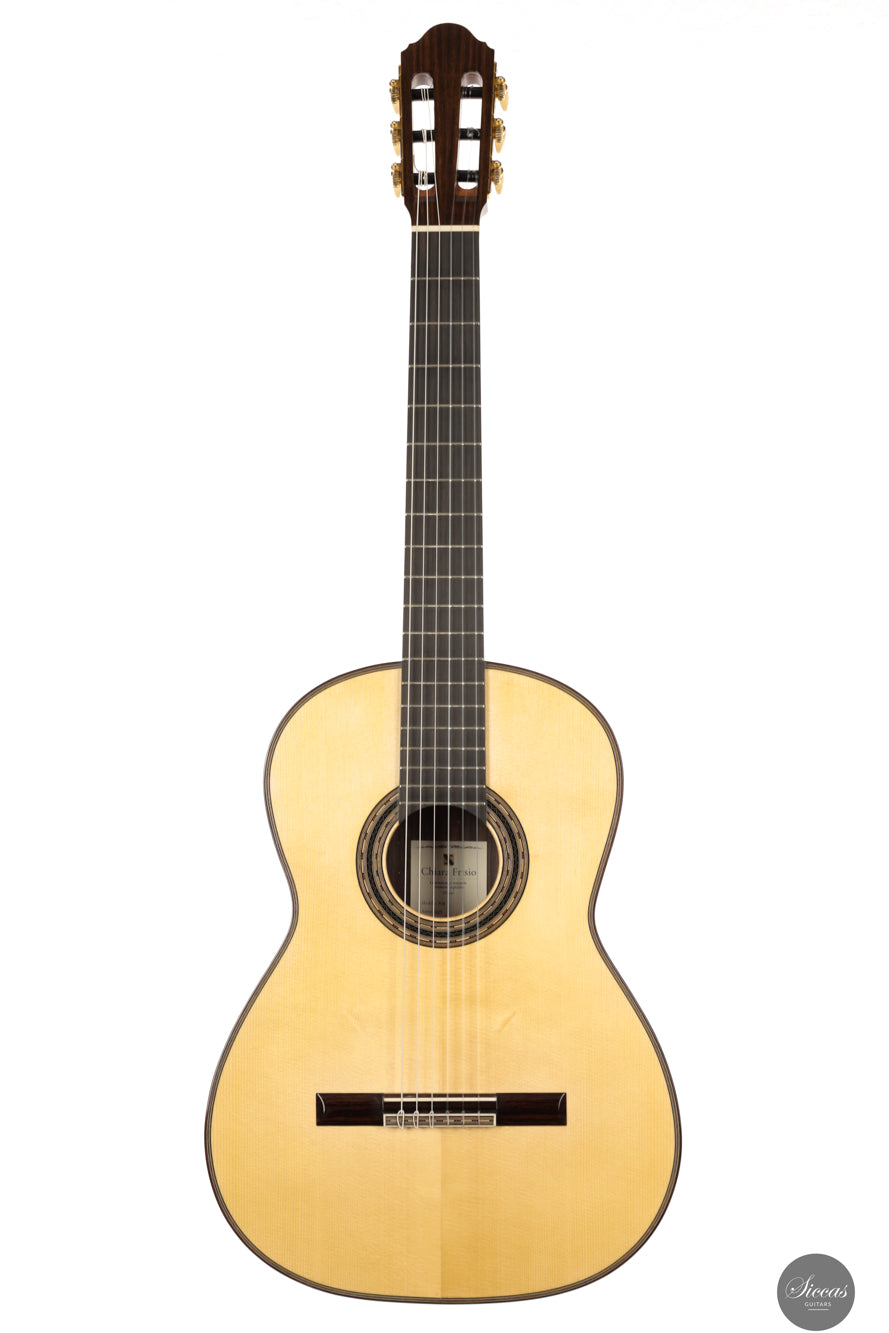
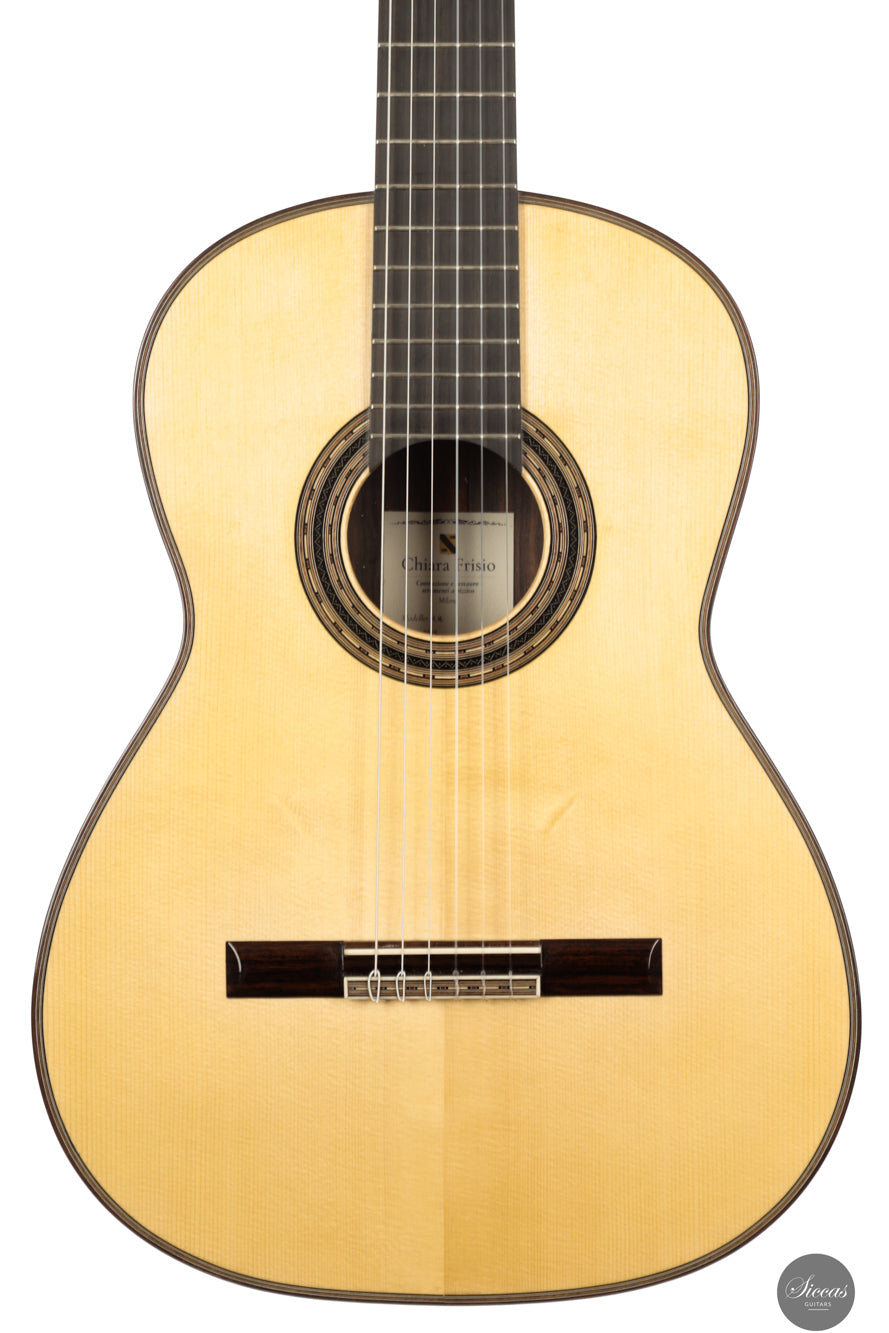
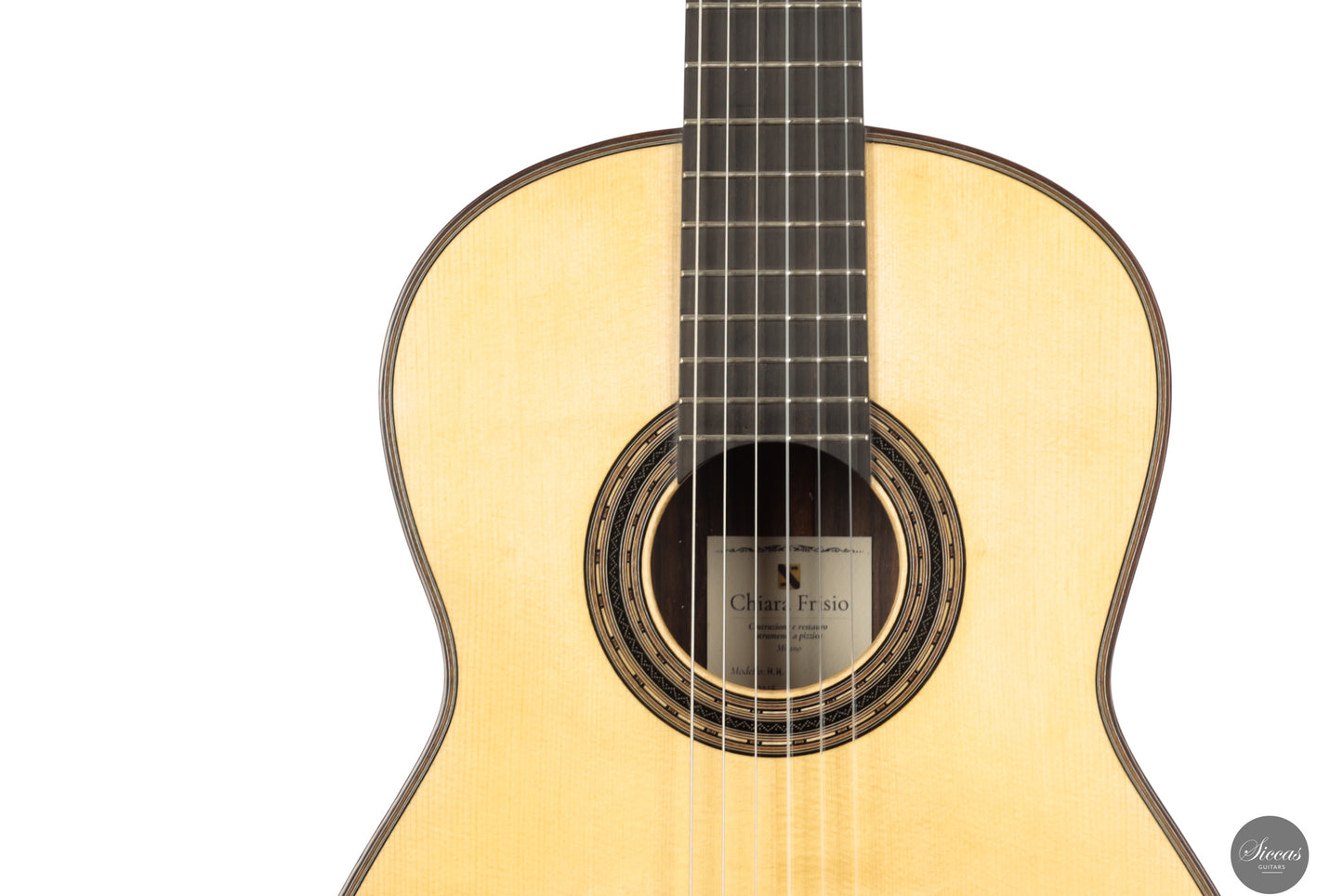
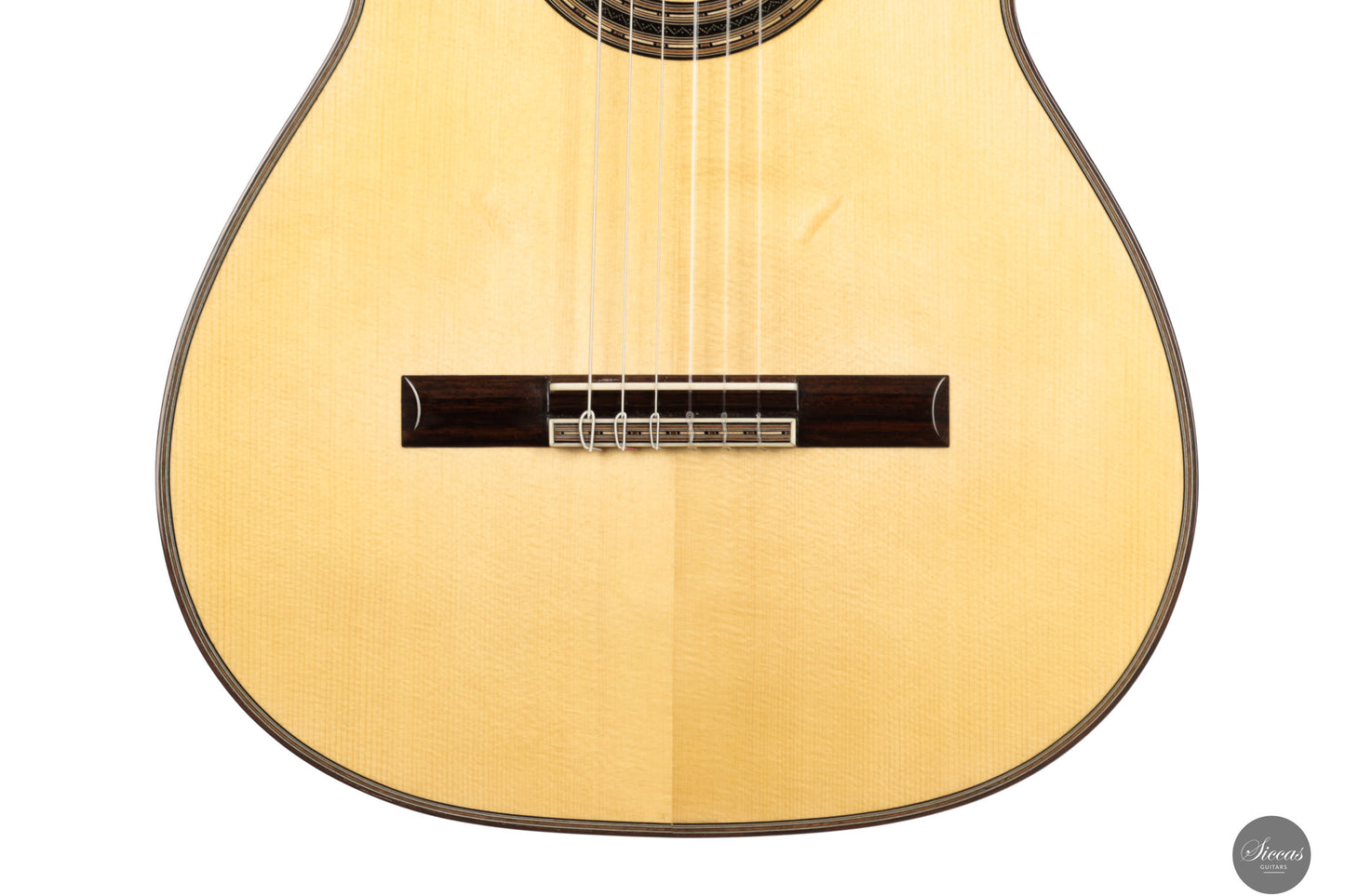
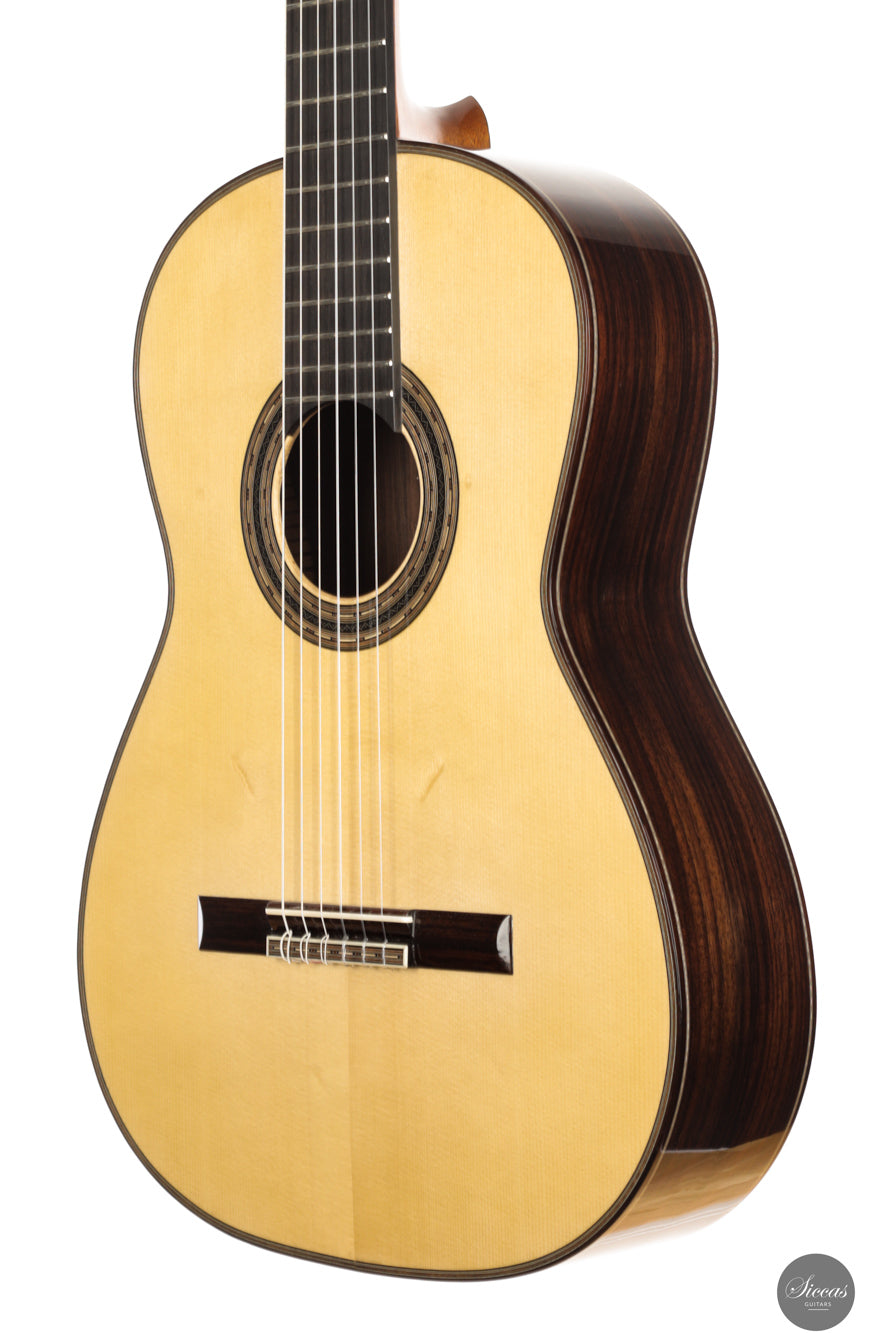
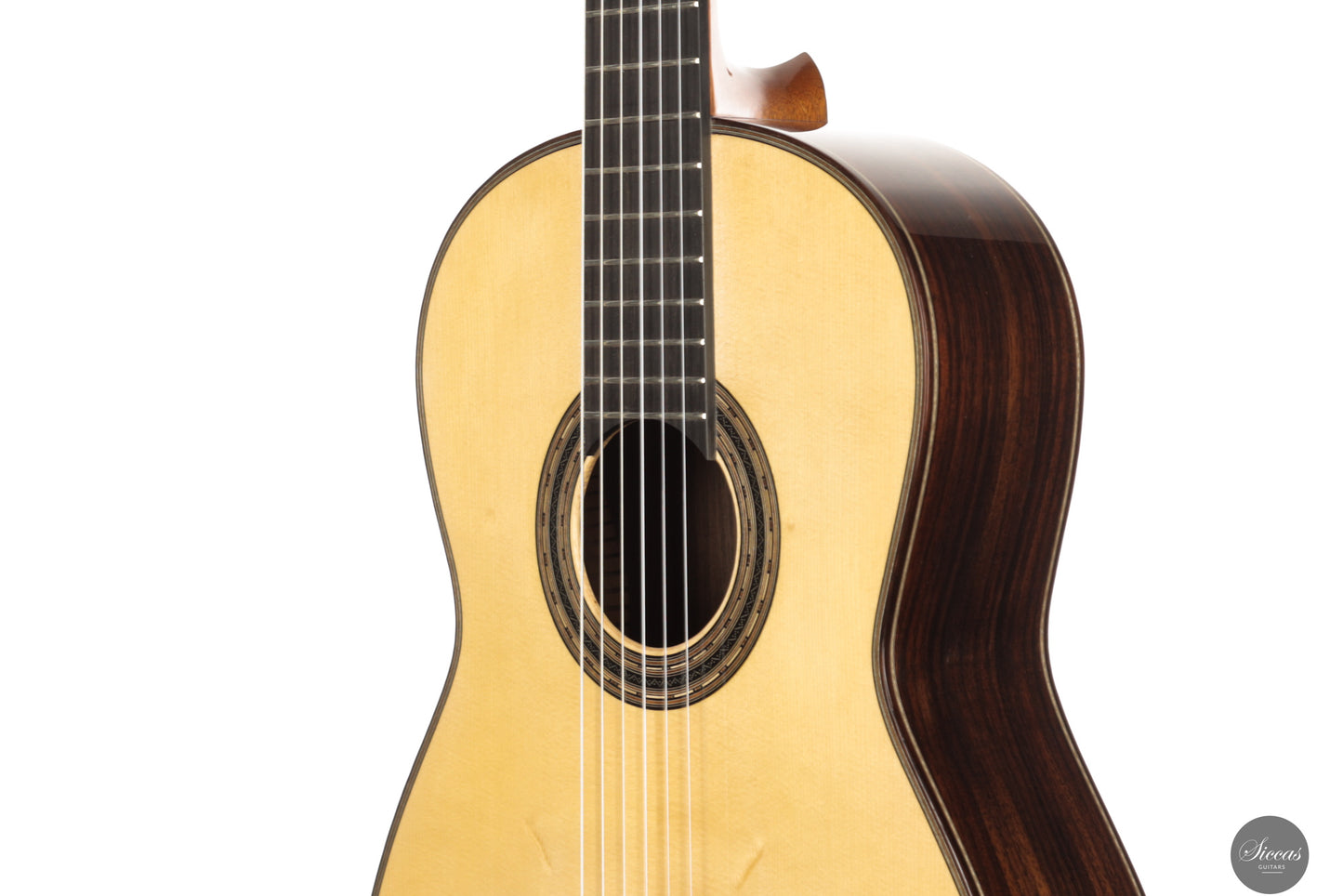


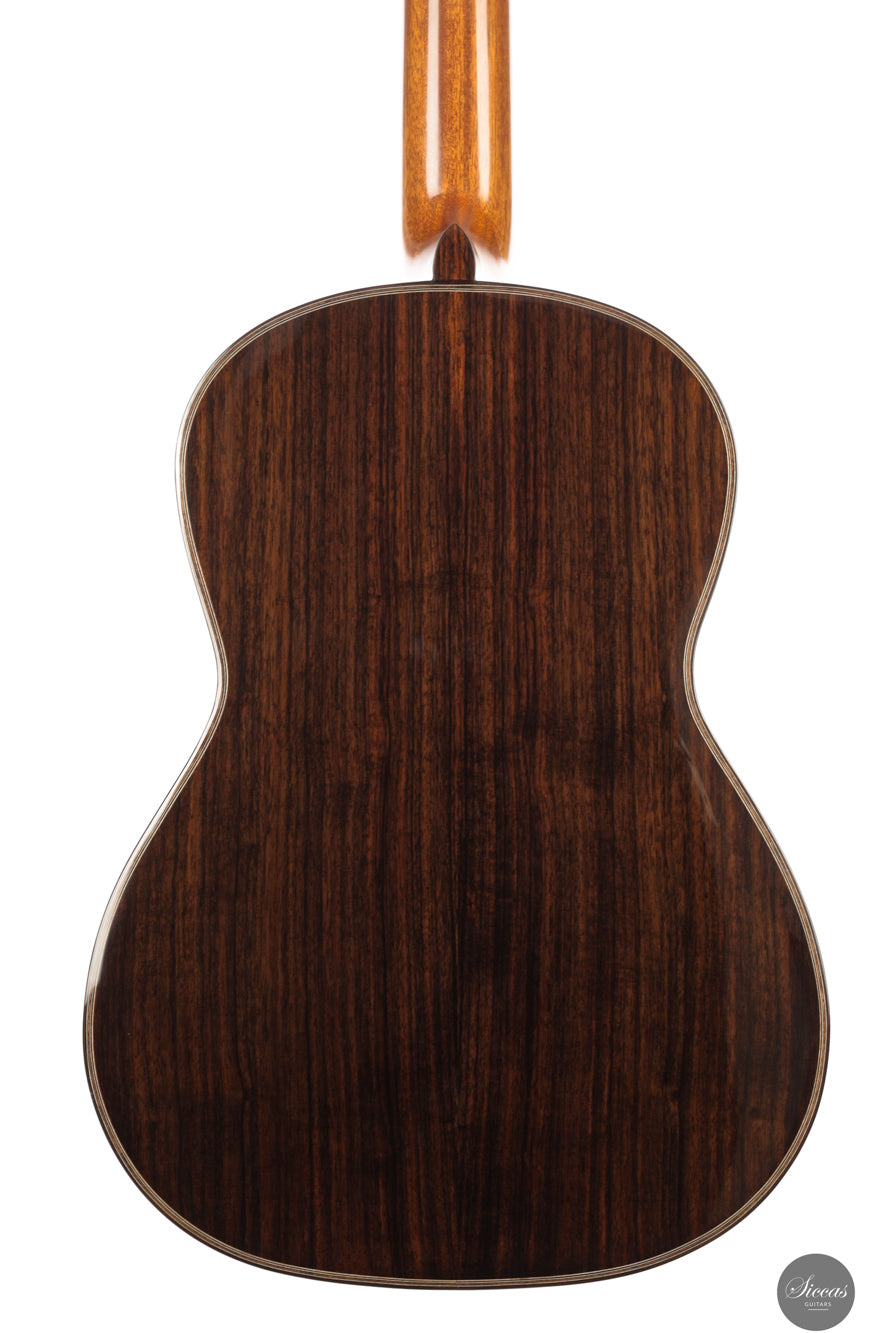


Video overview


More details about the guitar
About the luthier
Chiara Frisio is a Milanese luthier with deep roots in a family of musicians and artisans. After finishing high school, she followed her calling to instrument making and enrolled at the Civica Scuola di Liuteria di Milano. There she studied under esteemed teachers such as Roberto de Miranda, Silvia Zanchi, Ivan Bruna, and Bob Van de Kerkchove. After earning her diploma as Maestro Liutaio, she refined her technique over several years in the workshop of Lorenzo Lippi, expanding her knowledge across classical guitars, mandolins, and historical instruments.
Chiara Frisio is part of a new generation of makers with a keen eye for detail and a refined sensibility. Her work focuses on the nuanced tonal color possibilities of both modern and historical guitars. With every instrument, she seeks a balance of playability, acoustic depth, and expressive precision, always guided by her commitment to beautiful sound and thoughtful craftsmanship.
About the guitar
This 2025 spruce-top concert guitar by Chiara Frisio exemplifies her dedication to clarity, balance, and refined response. With Indian rosewood back and sides, French polish finish, and traditional construction throughout, it embodies a modern approach rooted in classical values. The air resonance falls between F♯ and G, supporting a full, elegant tone that projects with ease.
The sound is warm and direct, with a particularly well-shaped midrange that allows melodies and bass lines to remain distinct even in polyphonic passages. Basses are deep yet controlled, trebles are clean and vocal, and the entire register speaks with cohesion and refinement. The response is quick without being brittle, offering the player a flexible dynamic range and effortless articulation.
The neck is finely contoured, providing a natural and relaxed playing position for both hands. Every detail of construction reflects a commitment to clarity and aesthetic simplicity — from the clean lines of the headstock to the luminous finish that highlights the quality of the tonewoods. It is light and resonant, with just the right degree of resistance to support nuanced phrasing and expressive touch.
Regular care extends the life of the instrument
Even with careful use, a classical guitar may gradually change in appearance or respond to unstable storage conditions. Have a close look at your guitar regularly and be attentif to changes. If your instrument is suffering from its environement, it will let you know.
Protect Your Guitar: Handle with Care
Be mindful when touching your instrument with greasy or unwashed hands: any skin contact is a small attack on the varnish. Of course, a guitar is made to be played, but taking a few precautions helps preserve its beauty: wash your hands before playing, wear long sleeves, and avoid unnecessary direct skin contact with the body of the instrument.
Pro tip: Avoid playing with a button-up shirt, heavy jewelry, or a belt, as these can scratch the guitar. Also, make sure your guitar case is free of any objects that could damage the instrument during storage.
String care
A good habit to adopt is wiping down your strings briefly after each playing session. This small action significantly extends their lifespan and helps maintain a consistent, comfortable feel under your fingers.
Most importantly, clean strings are essential for keeping your instrument in tune. Corrosion, sweat, and dust can affect the uniformity of the strings and interfere with accurate tuning across the entire fingerboard.
Pro tip: If you're having trouble getting your guitar in tune, it might be time to change the strings. A useful test is to compare the pitch of the 12th fret harmonic with the fretted note at the 12th fret; if there's an unusually large gap between them, your strings may have lost their integrity and should be replaced.
Keep Your Shellac Finish Shining!
Got a guitar with a shellac (French polish) finish? Here's a simple trick: Take a clean microfiber cloth and gently breathe on the surface to create a light mist. Then, softly rub to remove fingerprints, sweat, and grease. That’s usually all it takes to keep it looking great, no products needed!
Pro tip: Every few years, treat your guitar to a check-up with a luthier to keep it in top shape.
Storing Your Guitar: Climate Matters
Your guitar can safely stay outside its case, as long as the surrounding environment maintains 42–55% humidity and a temperature between 18–25°C.
Keep in mind that humidity levels can still fluctuate inside the case, especially during seasonal changes.
- Too much humidity may cause overtightened strings and a dull tone.
- Too little humidity can lead to a bulging top, string buzz, or even cracks.
Avoid placing your guitar near radiators, air conditioners, or windows with direct sunlight.
Pro tip: Always close your guitar case while playing. This helps preserve a stable microclimate inside the case, so your instrument is protected the moment you put it back in.





